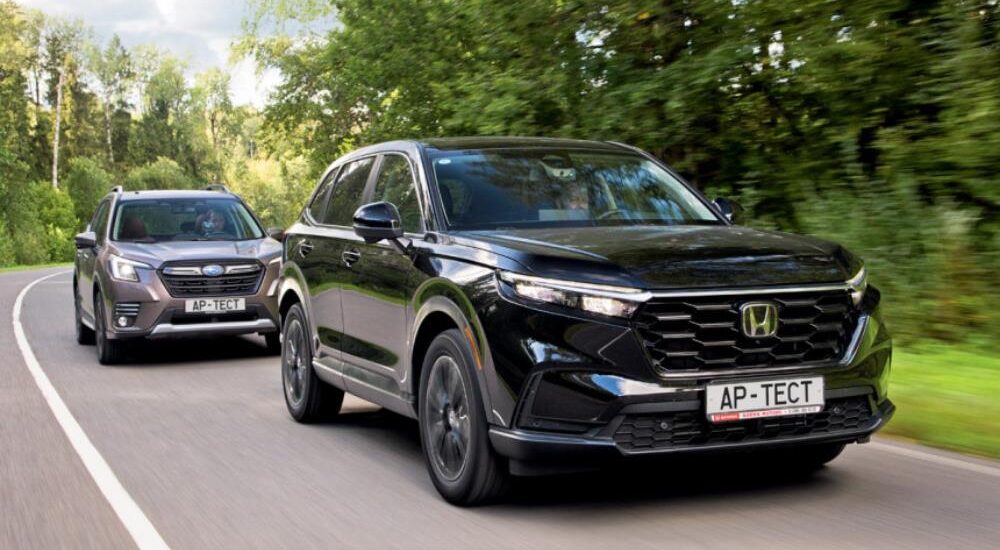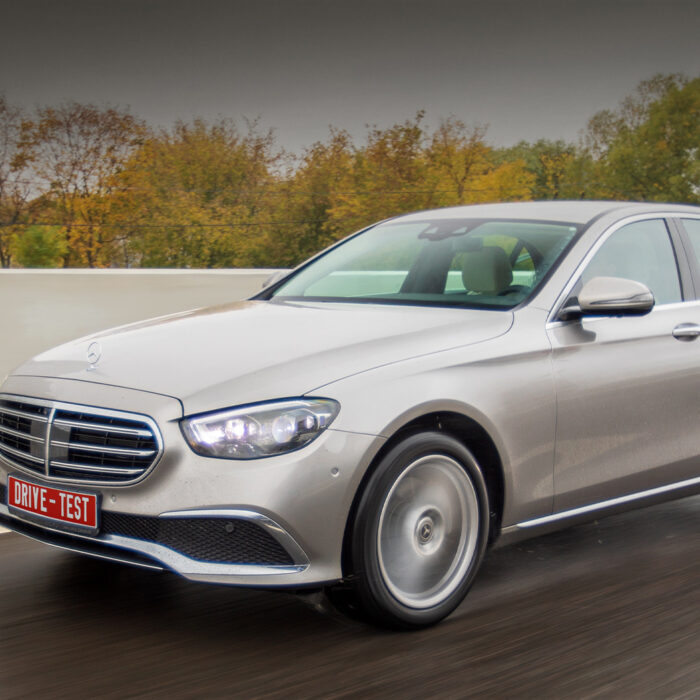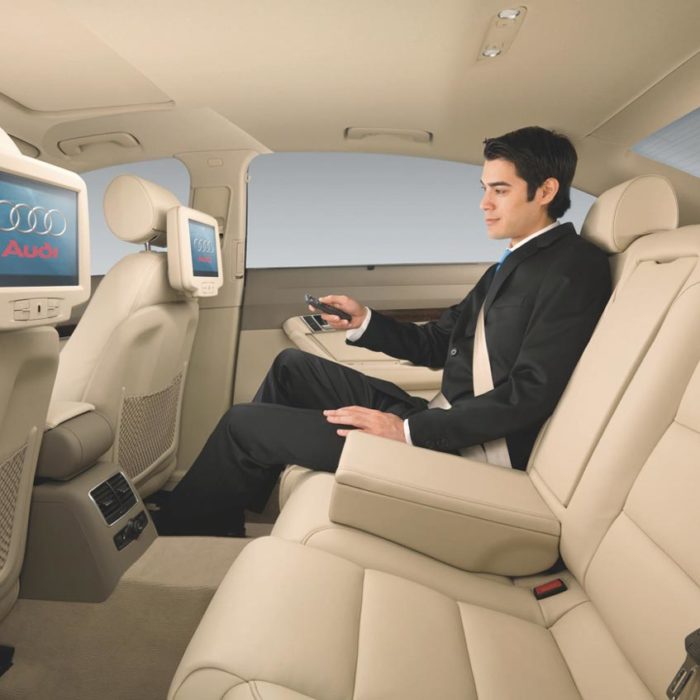The days of the grand old cabinets, with their worn varnish and rickety doors, have long passed in the world of furniture. Yet, in the automotive realm, some classics continue to endure. In this comparison, we shine a light on the enduring Honda CR-V, now in its sixth generation, pitted against the long-standing Subaru Forester, relatively unchanged for six years. Here, we embark on a test without the presence of Chinese cars, at least almost.
In the global arena of crossovers, Honda’s CR-V has established itself as a force to reckon with, particularly in the USA and China. Has it assimilated into the crowd, or does it still bear its unique identity? We’re here to find out as we set it side by side with the venerable Subaru Forester.
Our Honda CR-V, though produced in China in collaboration with Dongfeng Honda, arrives in Russia through the official importer, “Motor-Place.” This sets it apart from the unconventional channels of “gray market” dealers. In the Russian market, around 280 units of the CR-V made their debut, with prices starting from five million rubles. This price range aligns perfectly with the Japanese-made Forester.
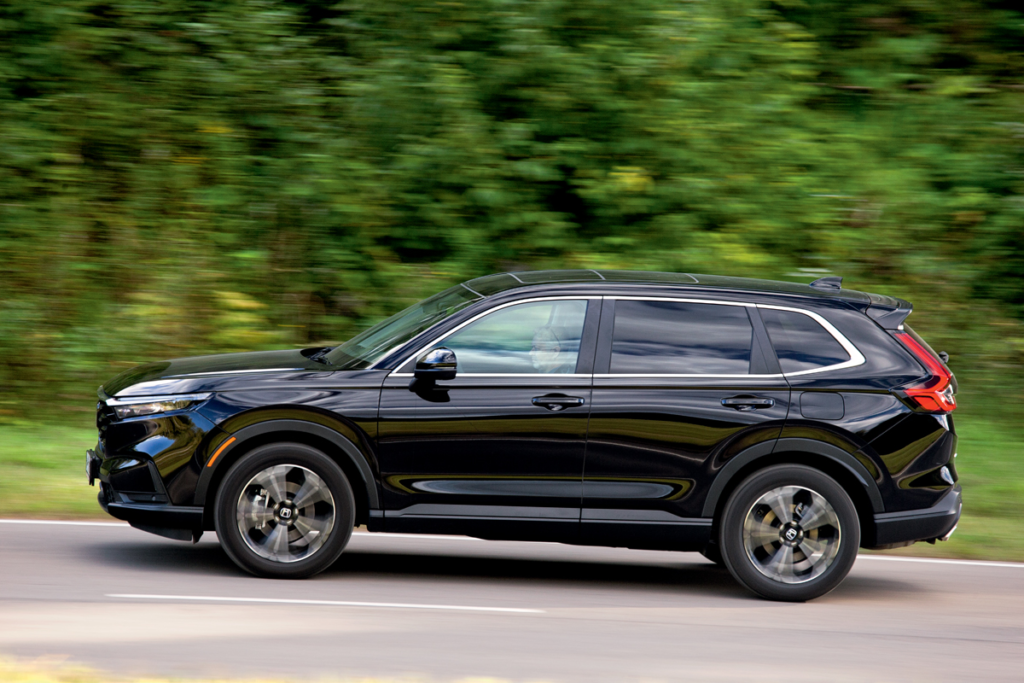
For those unfamiliar, CR-V stands for Compact Recreation Vehicle, a label it still wears in North America. But with its length spanning 4703 mm, it’s no minnow – it’s almost van-sized. Swing open the rear doors, and you’d be forgiven for thinking you’re in a microbus with sliding doors. There’s ample space back here; you can even fit a child’s car seat – just remember to remove the Isofix hinge covers. For adults, it’s a comfortable and spacious ride.
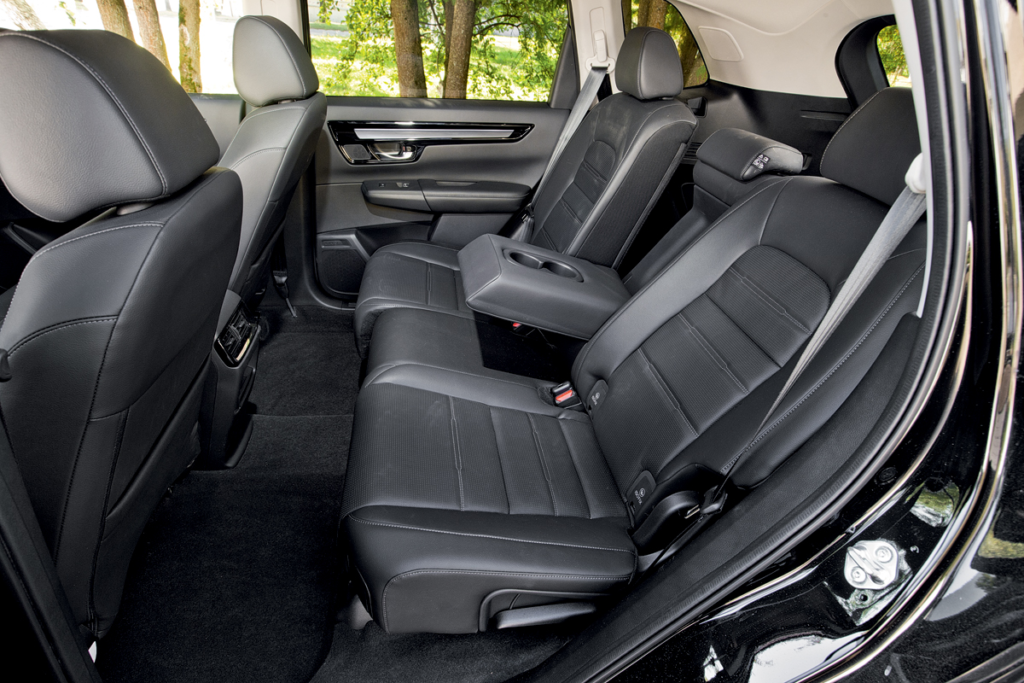
Wide entrance, plenty of space, with longitudinal adjustment and the possibility to fold the backrest. The only downside is the not very comfortable seating with flat cushions and hard edges.
However, there’s a surprising discovery in the rear seats. Some passengers may find the sides of the rear seats somewhat rigid, pressing on their posterior region. The cushioning at this spot is minimal, and anyone with a waist size over 32 might feel the discomfort. Although more svelte occupants won’t be overly troubled, the experience may take an abrupt turn when the CR-V tackles tight turns, a design flaw we couldn’t help but notice.
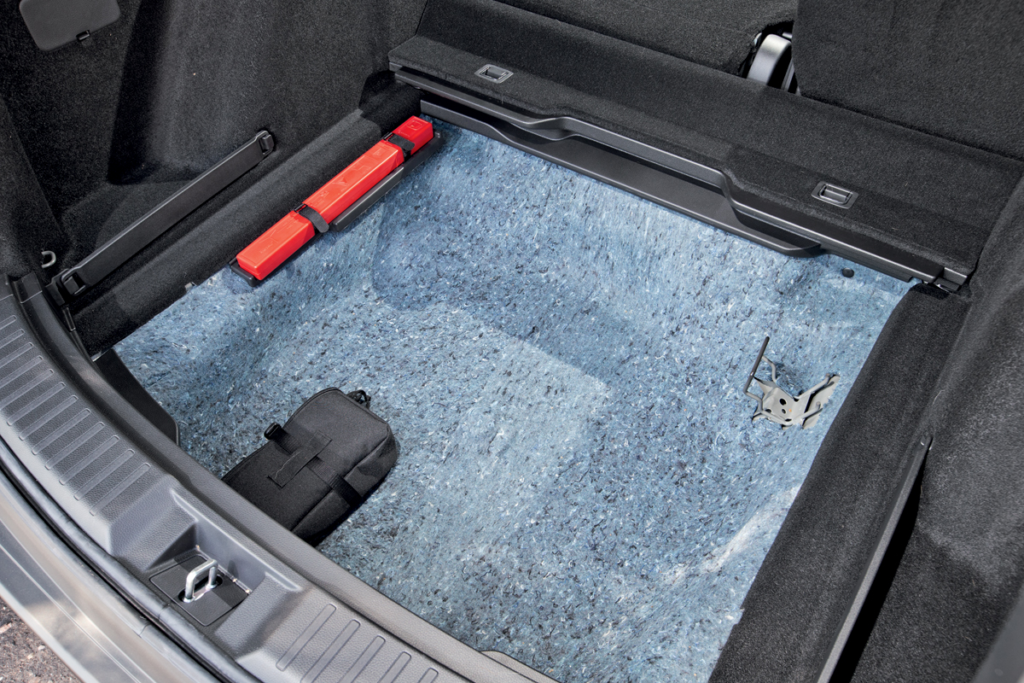
In the trunk’s underground compartment, there’s nothing.
This lack of thoughtfulness comes as a surprise considering that the CR-V is renowned for its user-friendly design. In its early iterations, the first-generation CR-V had a flat cabin floor and a passage between the two rows of seats. It even sported a box under the passenger seat and a foldable picnic table beneath the trunk floor. Unfortunately, those unique features are long gone. The underfloor area is now empty, sans a spare tire, which raises an eyebrow. Some claim this is a luxury feature, as a sealant with a compressor, instead of a spare tire, means no need to change a tire manually. While the logic might be dubious, there’s nothing but an emergency kit and colorful noise insulation under the floor. The trunk itself is expansive, complete with handy compartments for stowing small items, but the interior finishing maintains a deliberate simplicity to prevent any regrets.
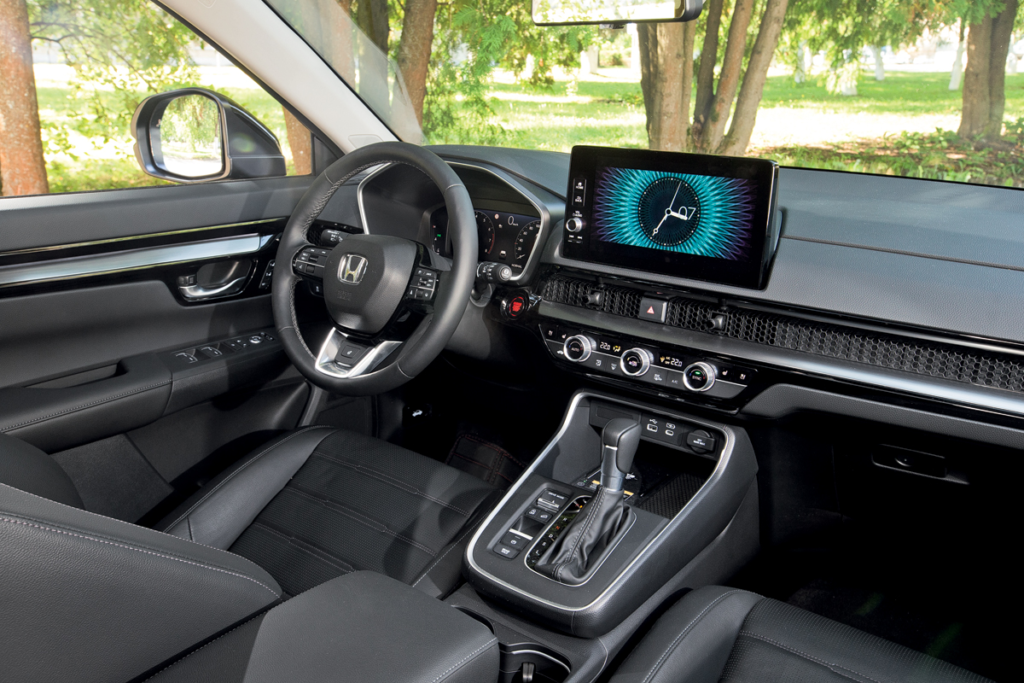
The screen with wide frames above the panel, real buttons, and knobs – you wouldn’t say that this interior appeared in 2022.
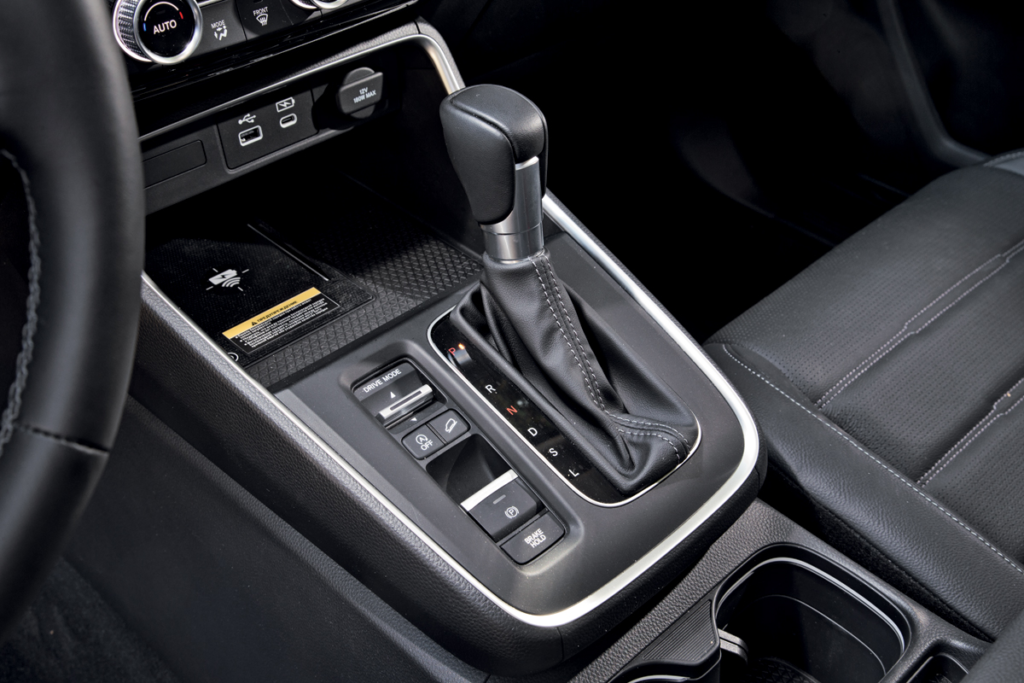
Check out the smartphone platform’s size. The gear lever is a real one, it moves boldly along a straight groove, but the locking lever is unusually pushed upwards.
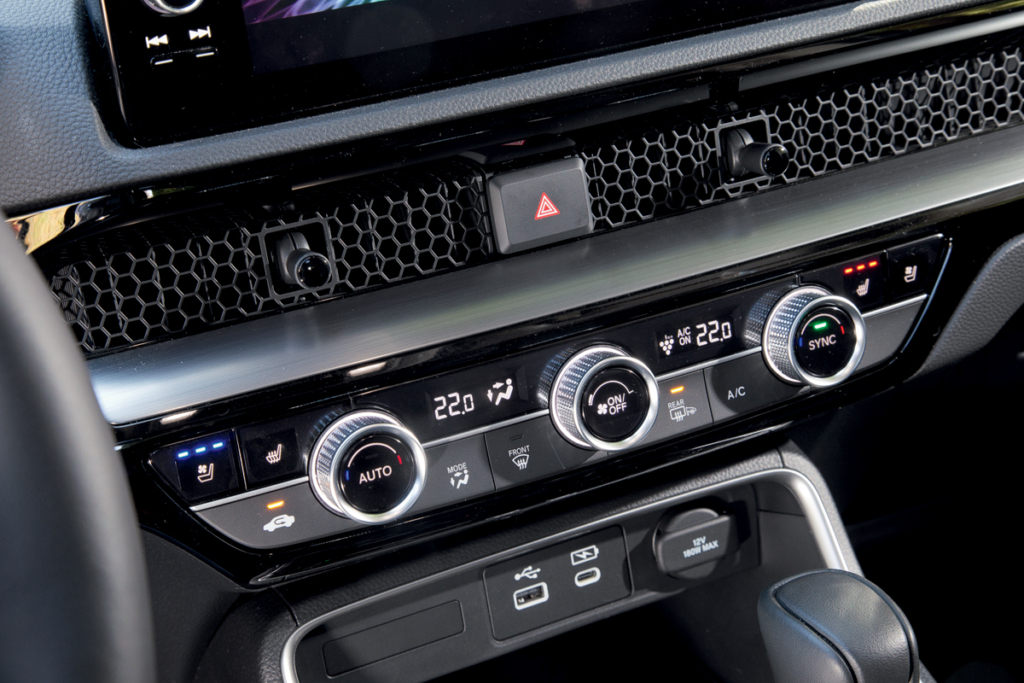
The most striking design detail is the continuous grille across the entire front panel and the unusual air vent levers.
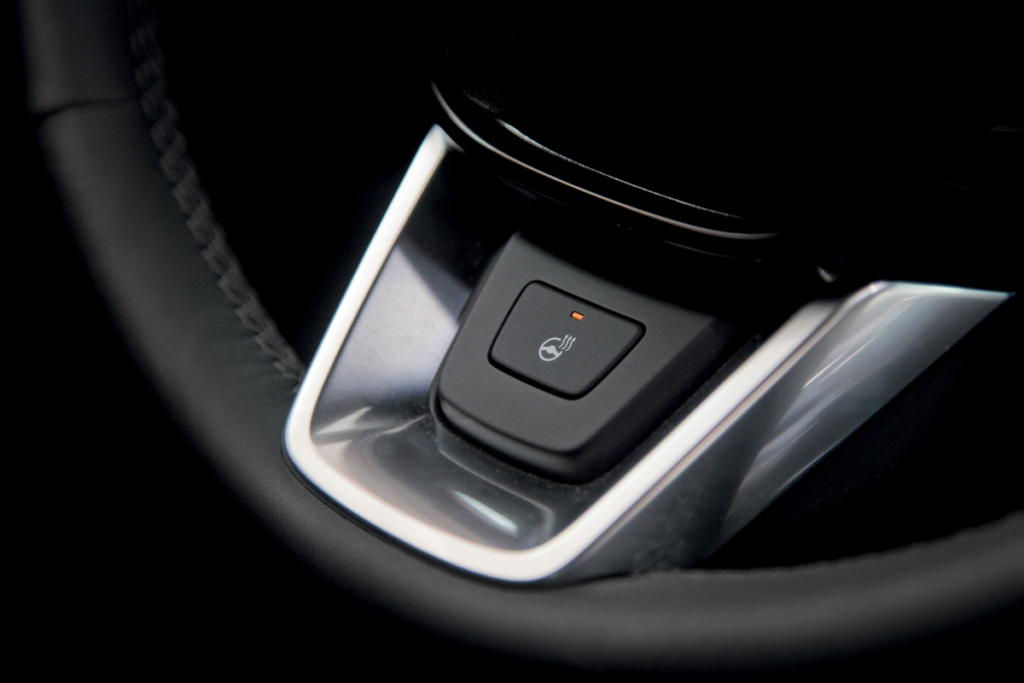
The heated steering wheel button occupies the entire bottom spoke – you can’t miss it.
On the bright side, the CR-V pays homage to the driver’s needs. The first row features a substantial center armrest box and boasts an organized central tunnel with an expansive platform for two phones, precisely positioned cupholders, and ample space for your favorite beverages. The CR-V upholds the legacy of accommodating cup and glass storage. Furthermore, the CR-V stands apart as one of the few vehicles where the digital instrument display surpasses the traditional analog gauges, especially in a time when Chinese tablets often feature illegible screens.
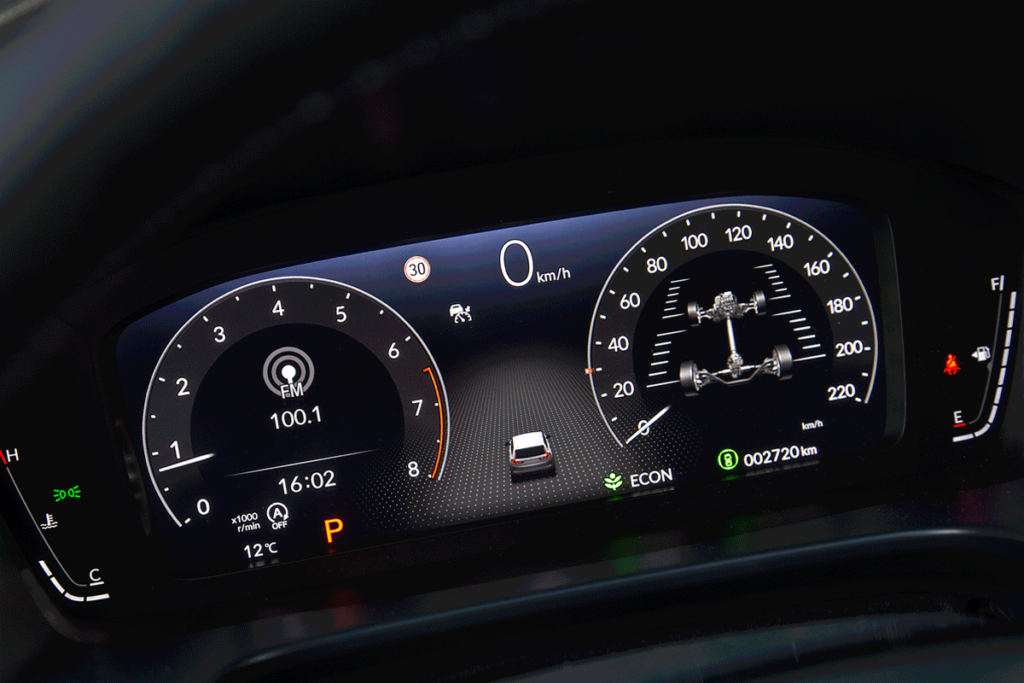
Cool instruments; you need to adapt to the unusually long distance to them; the screen is deeply embedded in the front panel.
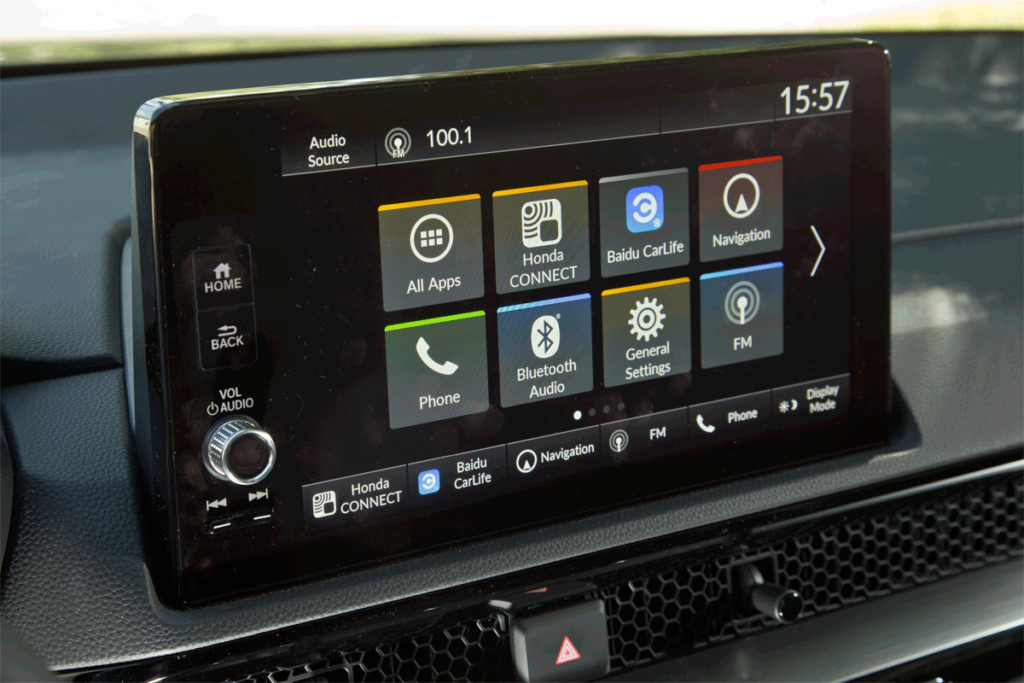
The multimedia system can currently only display Chinese time, but the importer is already working on a Russian-language firmware.
Take a glance at the range of seat height adjustments – it’s impressively diverse. In fact, the lowest setting may feel excessive, potentially hindering visibility. However, questions arise concerning the visibility outside the vehicle. The exterior reflective elements are designed in a way that blurs sharpness, making the image perpetually out of focus. Even the rear-view camera’s feed on the interior mirror doesn’t completely cover the actual reflection, resulting in a perplexing dual-image experience. Distinguishing between the two images isn’t as straightforward as one might hope.
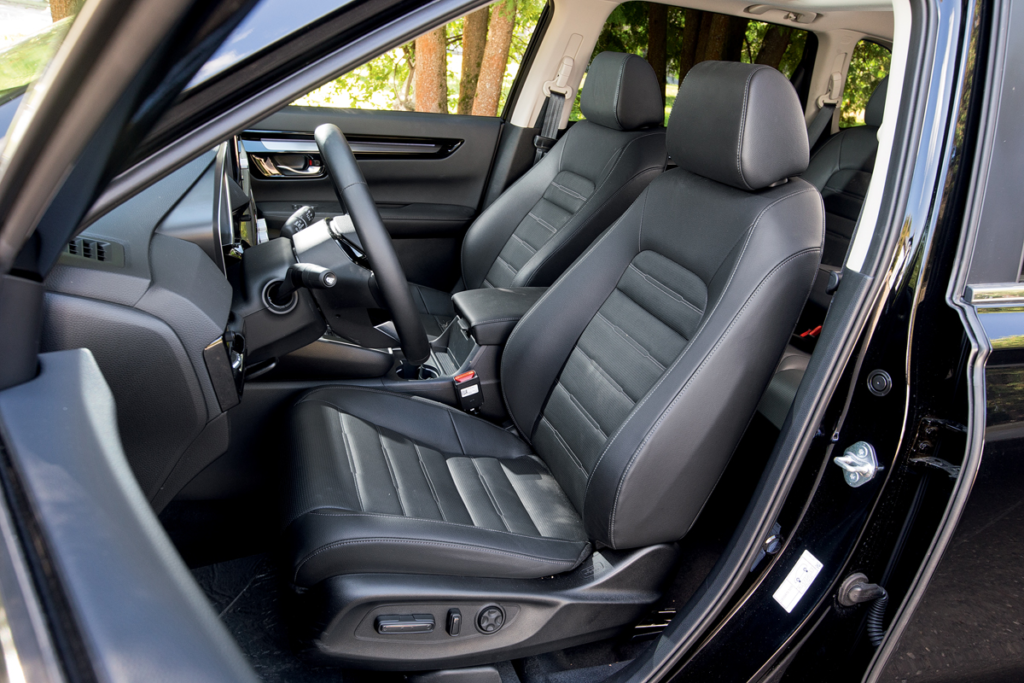
The firm front seats with noticeable lateral support are comfortable. They come with power adjustments, heating, and ventilation.
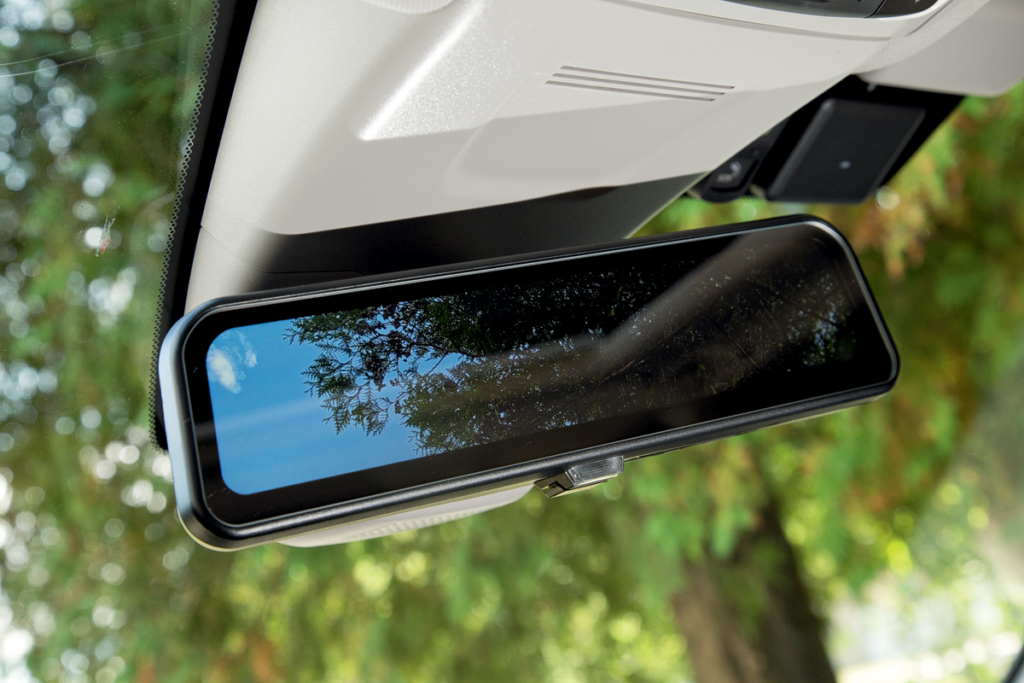
The button at the bottom switches the mirror modes – standard or camera feed, which somehow doesn’t fully replace the reflection.
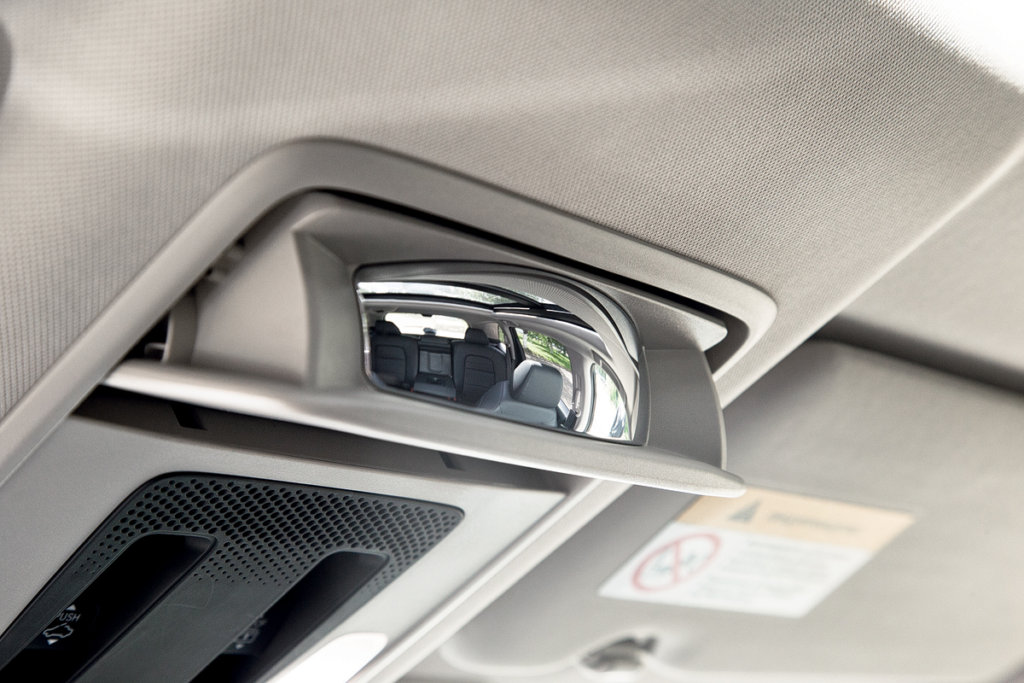
In the sunglass holder, there’s a discreet convex mirror for monitoring the cabin.
My last encounter with the CR-V in the showroom featured a 2.4-liter naturally aspirated engine coupled with a continuously variable transmission (CVT). So, I anticipated something akin to that, especially when compared to the Subaru Forester, which boasts a 2.5-liter (185 hp) naturally aspirated engine paired with a Lineartronic continuously variable transmission. However, upon opening the Honda’s hood, I was initially perplexed; it seemed like there was barely an engine underneath. Instead, in the heart of the engine bay, a compact turbocharged 1.5-liter engine (193 hp) resided. This powerplant had made its debut in the previous CR-V generation but has only now reached the Russian market. Interestingly, despite the turbocharger’s presence, the CR-V recommends using 92-octane gasoline, which left me chuckling, considering the era when ‘normal’ engines graced our cars. However, a look at the performance figures wiped away any doubts. The CR-V conspicuously outpaces the Forester with its naturally aspirated engine.
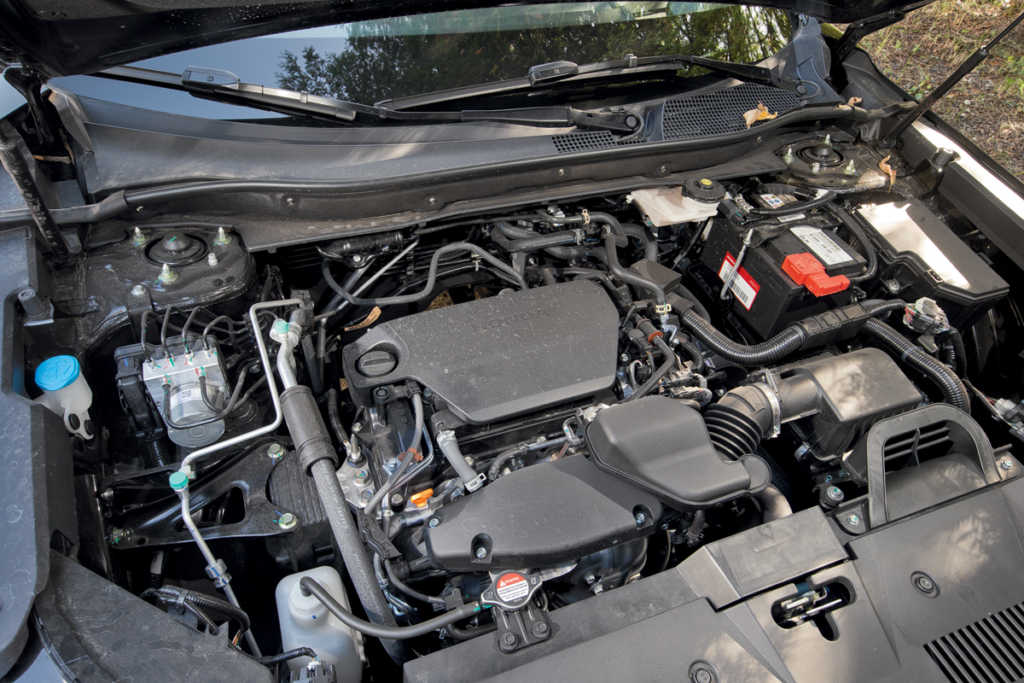
Two such engines easily fit here! It’s nice to have a proper dipstick.
In comparison to the Chinese crossovers also touting a “1.5T” under their hoods, the contrast is stark. Not even remotely comparable. It raises the question – why do most Chinese brand cars seem to require the accelerator pedal permanently pressed to the floor to truly unleash their power? Only then do their engines reveal their potency. However, finesse and intelligent throttle response seem to be a bridge too far. With the CR-V, though, you get what you press – a direct and intuitive connection with the car.
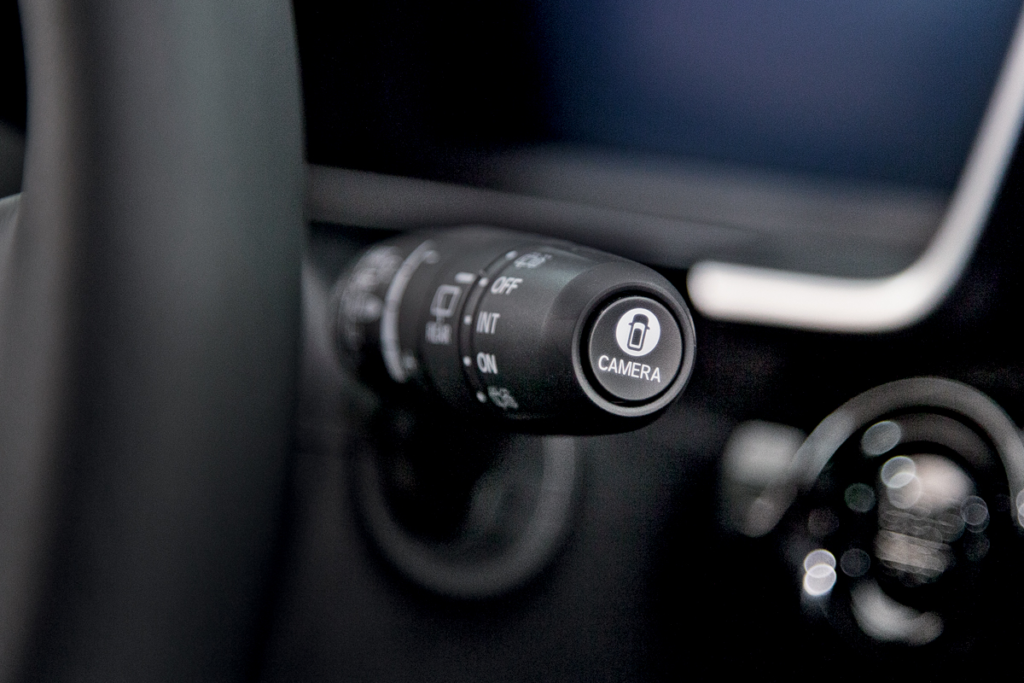
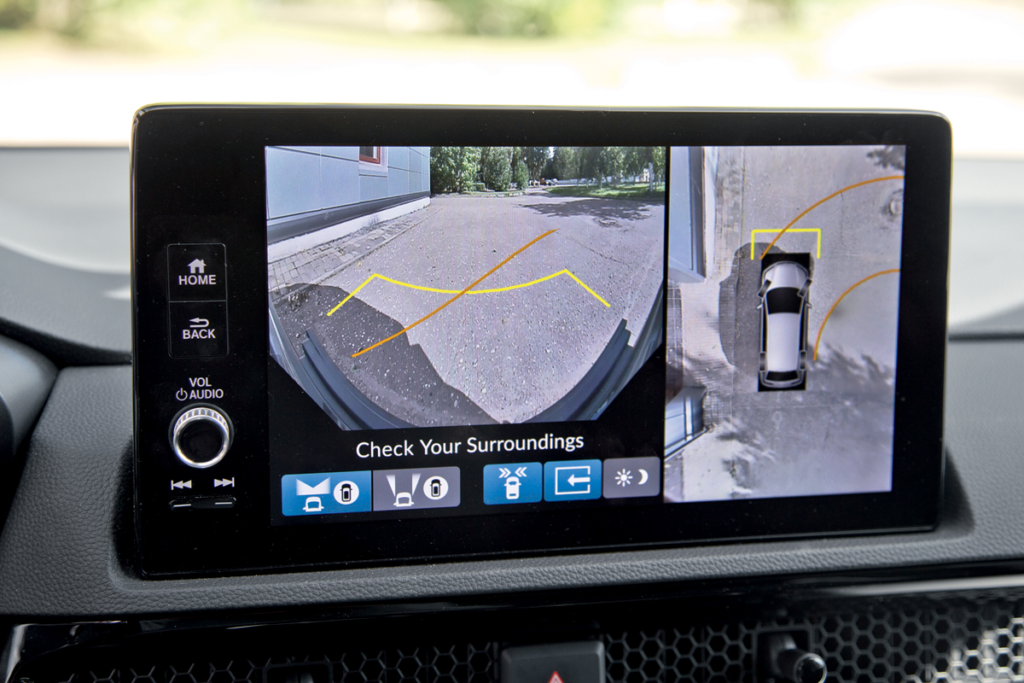
On the end of the right-hand understeer lever, there’s a quick button to activate the camera feed – it works even while driving.
Besides the linear and logical throttle control, the CR-V also boasts transparent brakes. Initially, I found the brakes a tad modest; their diameter seemed more fitting for a compact car than a 1.7-ton crossover. However, the test track performance spoke volumes: an impressive 35 meters to stop from 62 mph (100 km/h). The brake system demonstrated resilience, successfully completing three consecutive full braking runs.
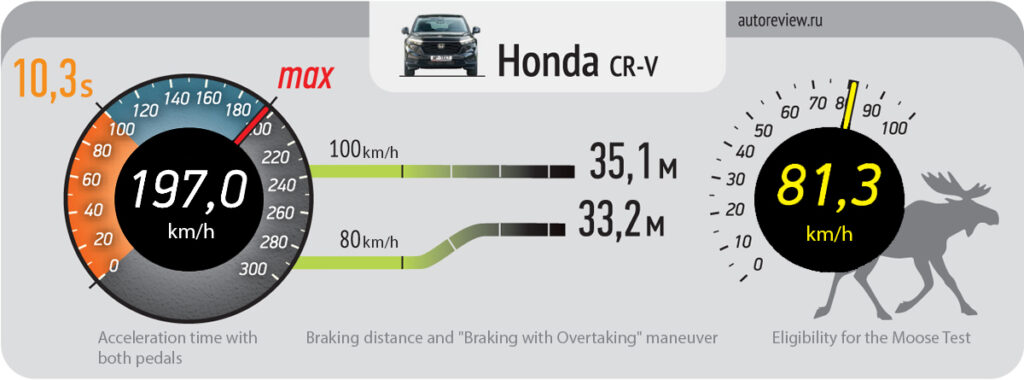
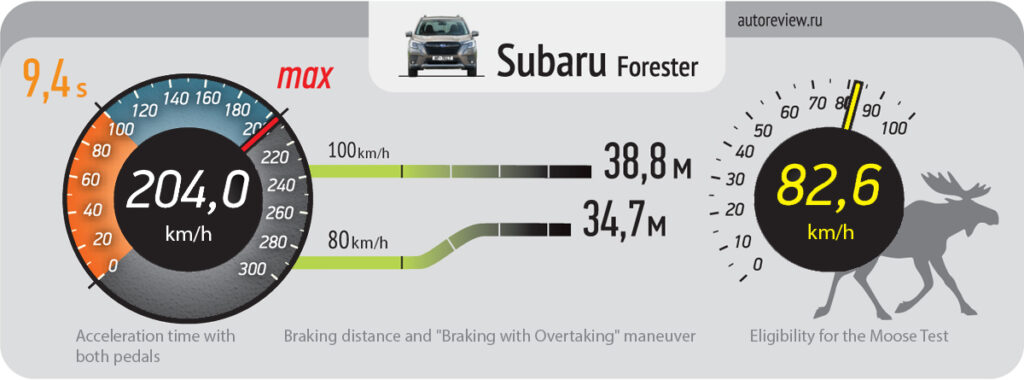
The Forester also performed admirably, though it took nearly four meters longer to stop. Traditionally, Subaru has been lauded for its throttle pedal responsiveness, but pitted against the CR-V, it loses some of its finesse. In the standard intelligent mode, it lags slightly behind the Honda, and in sport mode, there’s an initial sharpness that may be uncomfortable. The CR-V, on the other hand, handles the task admirably, without the need for special modes.
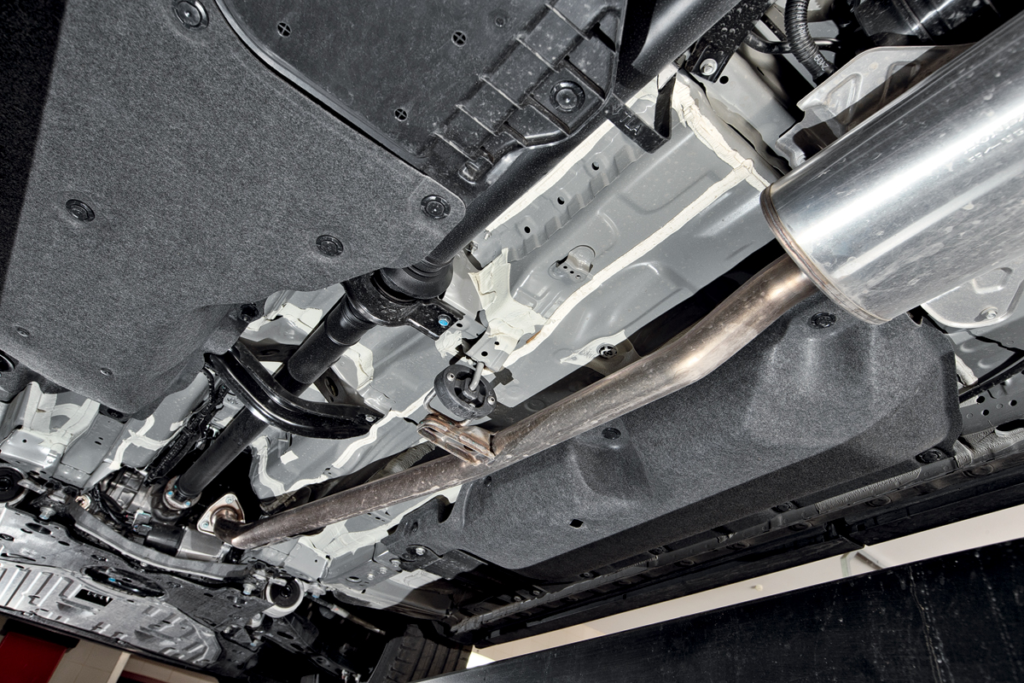
Buyers of new CR-Vs should consider underbody corrosion protection – there are many open areas here. To the right of the exhaust system, there’s a niche for the hybrid versions’ battery. In our case, it’s empty.
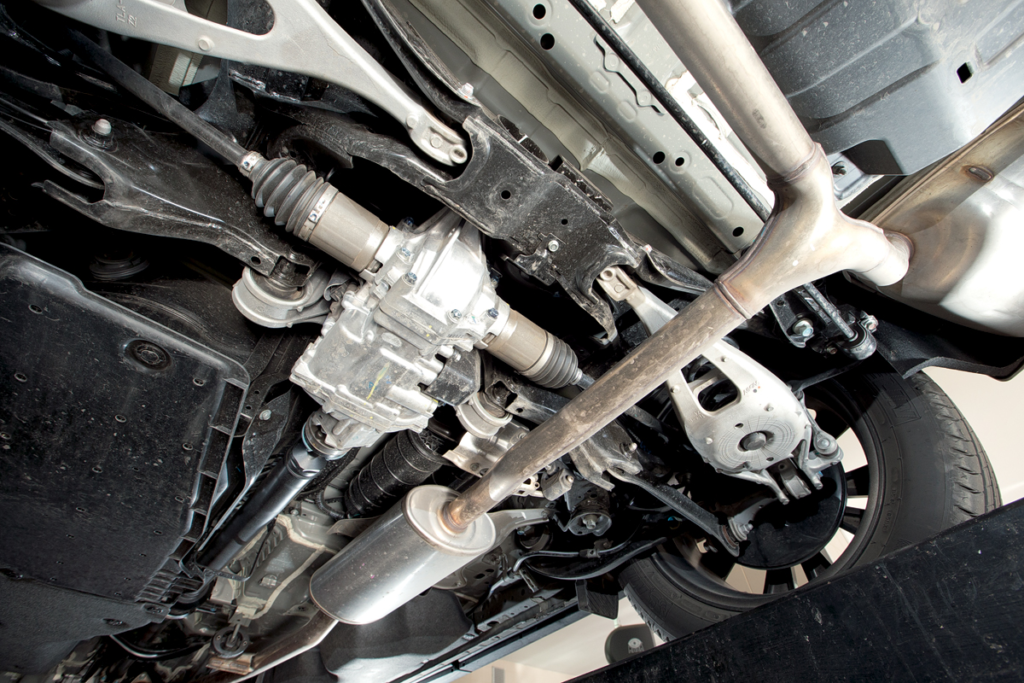
Interestingly, for a one-and-a-half-liter engine, Honda’s engineers didn’t skimp on a split exhaust system. The lower control arms and rear axle hubs are made of aluminum.
| Parameter | Honda CR-V | Subaru Forester |
|---|---|---|
| Maximum Speed (km/h) | 197.0 | 204.0 |
| Acceleration Time (s) 0–60 km/h 0–100 km/h 0–150 km/h 400 m Run (s) 1000 m Run (s) 60–100 km/h 80–120 km/h | 5.3 10.3 22.1 17.1 30.9 5.3 6.6 | 4.5 9.4 20.3 16.5 30.3 5.9 8.1 |
| Braking Distance from 100 km/h, m | 35.1 | 38.8 |
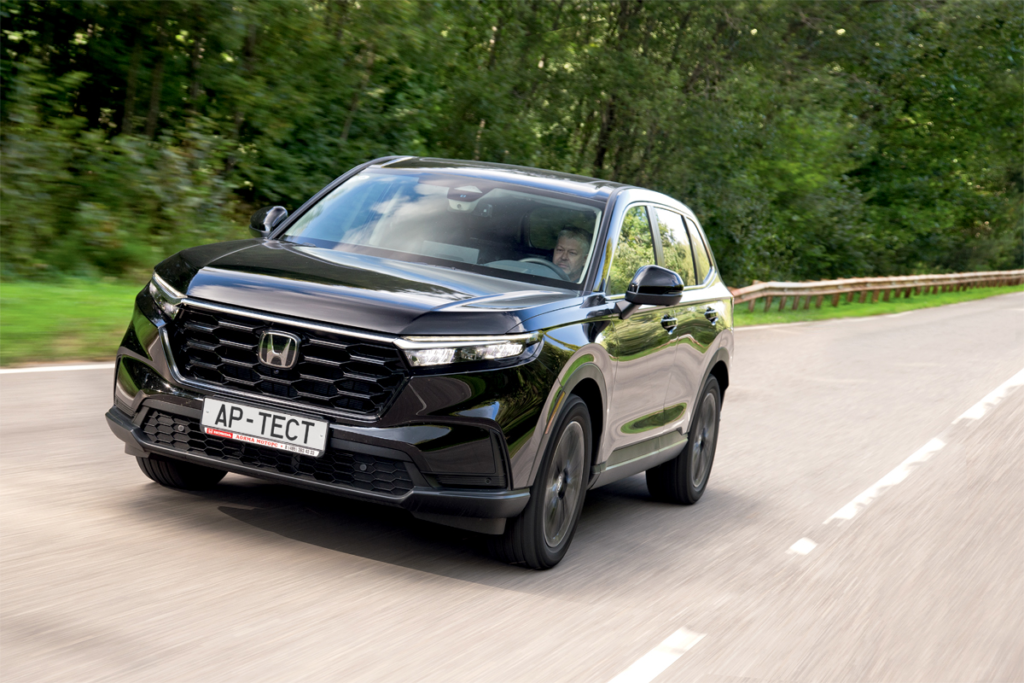
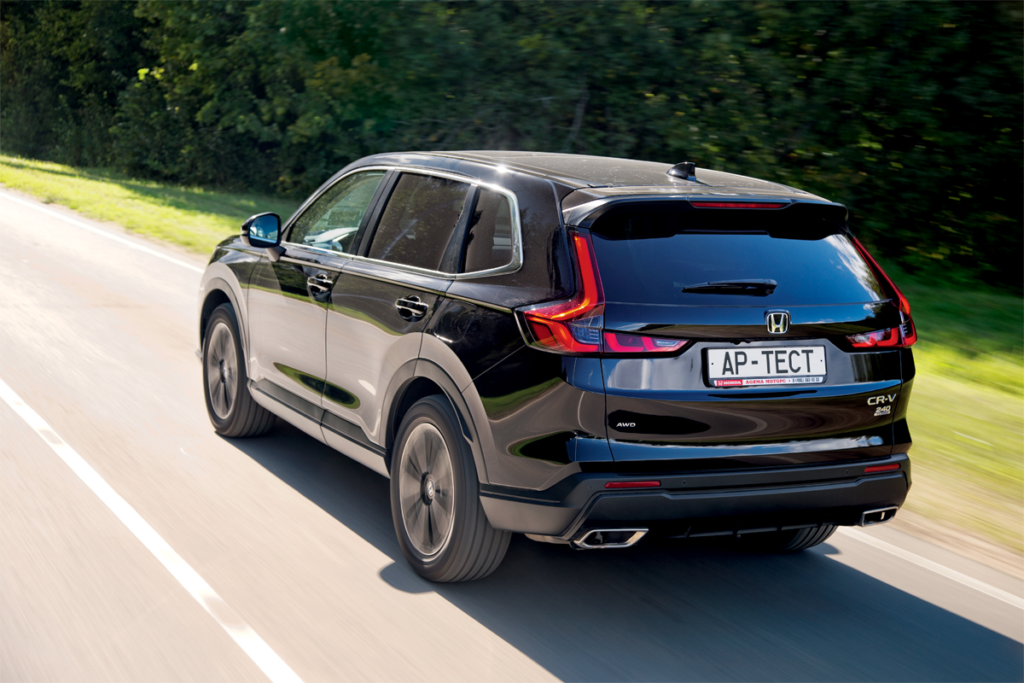
The Honda CR-V with the steering wheel in the locked zero position stands firmly on a straight path.
Opting for Sport mode in the Subaru might yield slightly more exciting acceleration, but in everyday life, the CR-V’s small turbo engine proves more convenient and economical. Even in dense city traffic, the CR-V sips fuel, consuming only 9.7 liters per 100 kilometers, whereas the Forester is thirstier by about a liter and a half. It’s worth mentioning that Subaru also offers a 1.8-liter turbo engine (177 hp), but curiously, it’s reserved for right-hand drive Foresters in the domestic Japanese market.
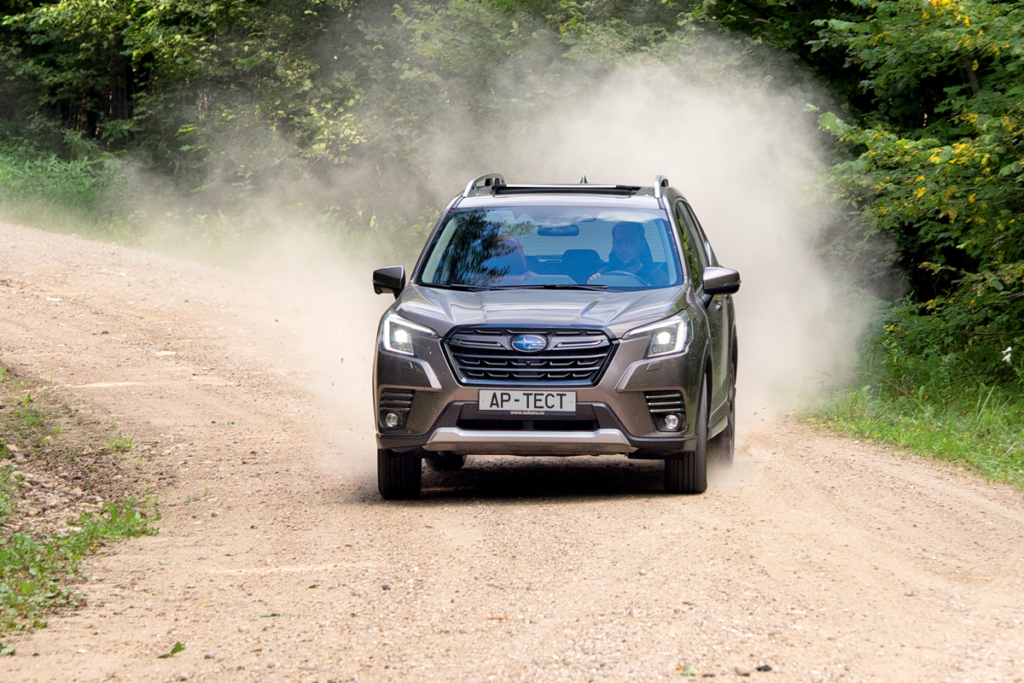
The Forester, with its robust suspension and soft oversteer when lifting off the gas, encourages sliding through a turn on a dirt road. But the non-disable stability system intervenes as soon as you turn the steering wheel to correct the slide.
Now, some might find the distinctive engine note a fair trade-off for the narrower powerband in the Forester. The growl of Subaru’s flat-four engine at high revs adds an exhilarating soundtrack to the drive. Yet, the experience can become surprisingly thrilling without it. On an empty country road, the Forester’s spirit emerges. This tall, utilitarian vehicle retains the essence of the old Foresters, essentially lifted wagons featuring robust turbo engines.
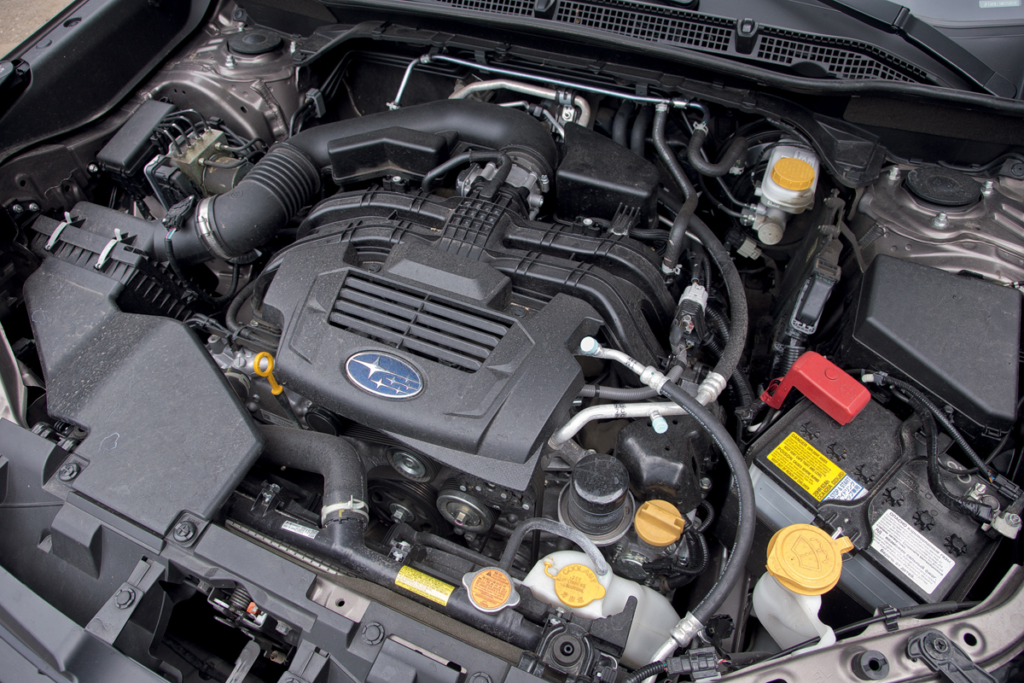
Under the hood, Subaru offers a familiar tight fit.
Steering the Subaru is an active experience, and initially, you might find yourself oversteering. While the chassis has matured, its responsiveness slightly lags behind the steering input. Swift and reactive movements occasionally challenge the rear suspension, impacting maneuver accuracy. Yet, with a calmer approach, the Forester displays an eagerness to turn. Understeer is virtually absent, and there are no signs of inadequacy in maneuverability. The steering response is immediate, instilling confidence that the car will execute the maneuver. If you push the speed limits, a gentle drift emerges, and in emergencies, the stability control system intervenes. Sadly, this agility somewhat diminishes straight-line stability, and the lightweight steering doesn’t provide particularly informative feedback.
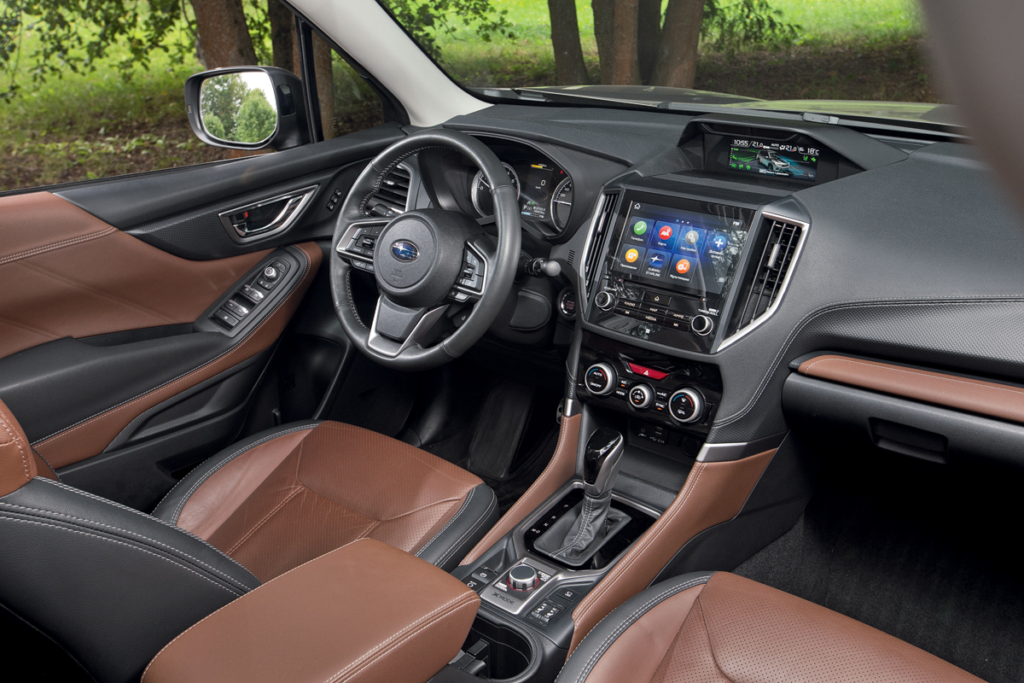
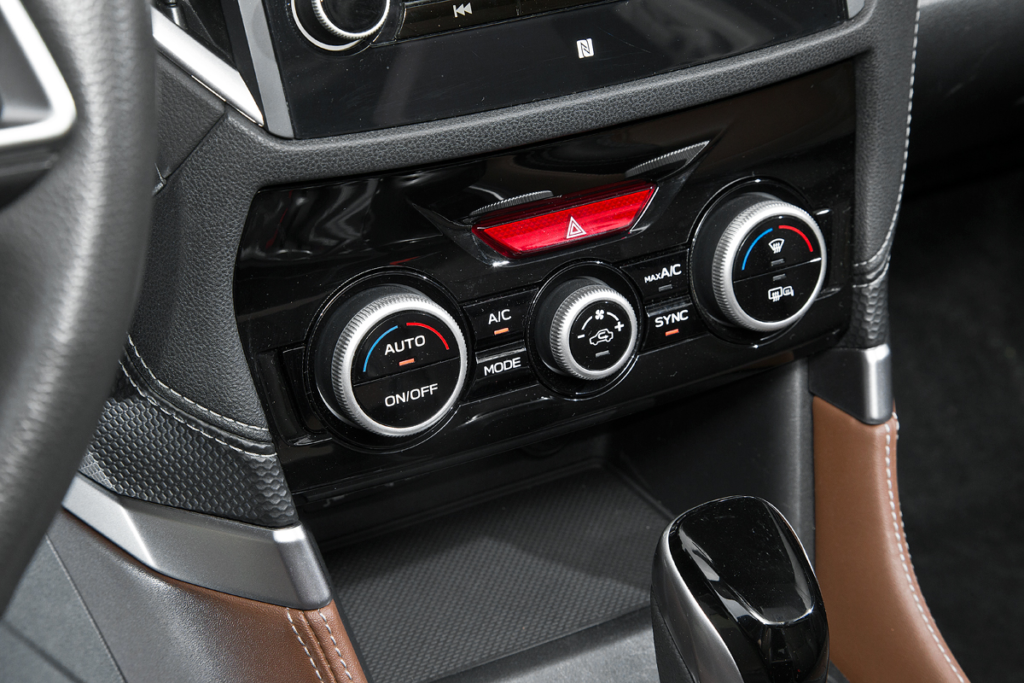
With this interior finish, Subaru looks luxurious. The ten-year-old architecture doesn’t seem outdated, and the screen integrated into the front panel is exquisite.
As we ventured into more adventurous territory, the CR-V’s performance was a bit unsteady. The initial impression is one of a somewhat unwieldy vehicle, with the steering positioned quite tightly to prevent any wayward drifts on the highway. It’s important to remember that, above all, this is a car designed for North American households, with high-performance Type R variants being an afterthought. As you enter a turn, the CR-V doesn’t exhibit the same agility as the Subaru. However, considering the stiff sides of the rear seats, this might actually be an advantage. After a brief period of adaptation, you’ll notice that despite the initial feeling of unresponsiveness, the Honda is more than capable of maintaining a speed almost as high as the nimble Forester. This is evidenced by our slalom test, where the CR-V showcased an almost identical speed of 81 km/h, while the Forester clocked 82 km/h. Consequently, both crossovers earn similar handling ratings, although their driving characters and the driver’s subjective experiences differ.
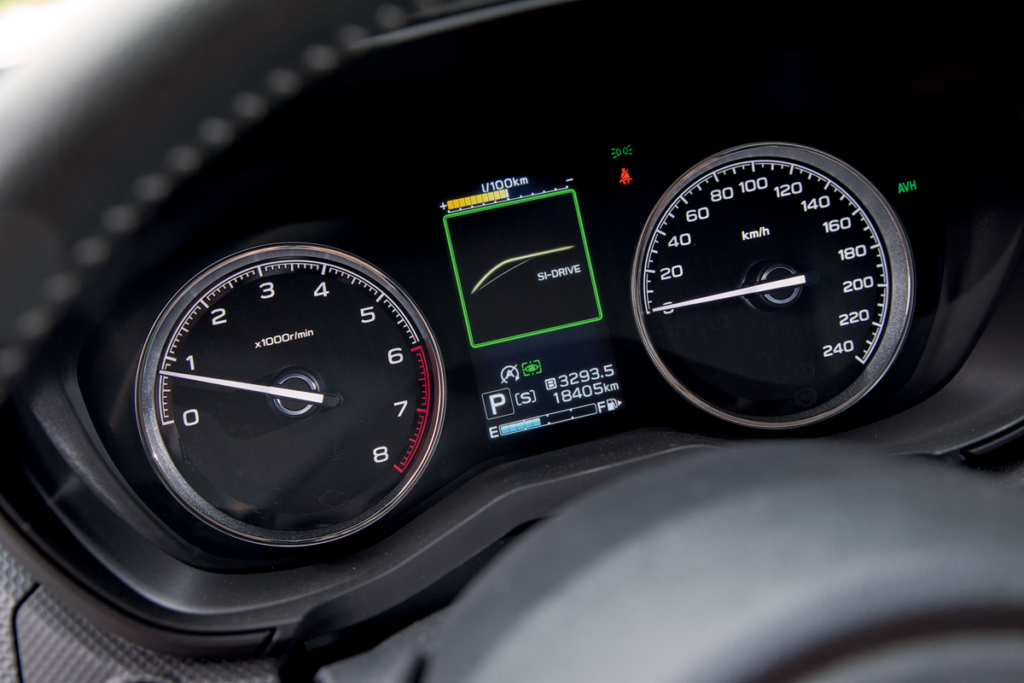
The Forester still has analog gauges, but they don’t stand out from the Honda’s. On the modest infotainment screen, there’s a graph of the SI-Drive system, which sharpens the throttle response at the start.
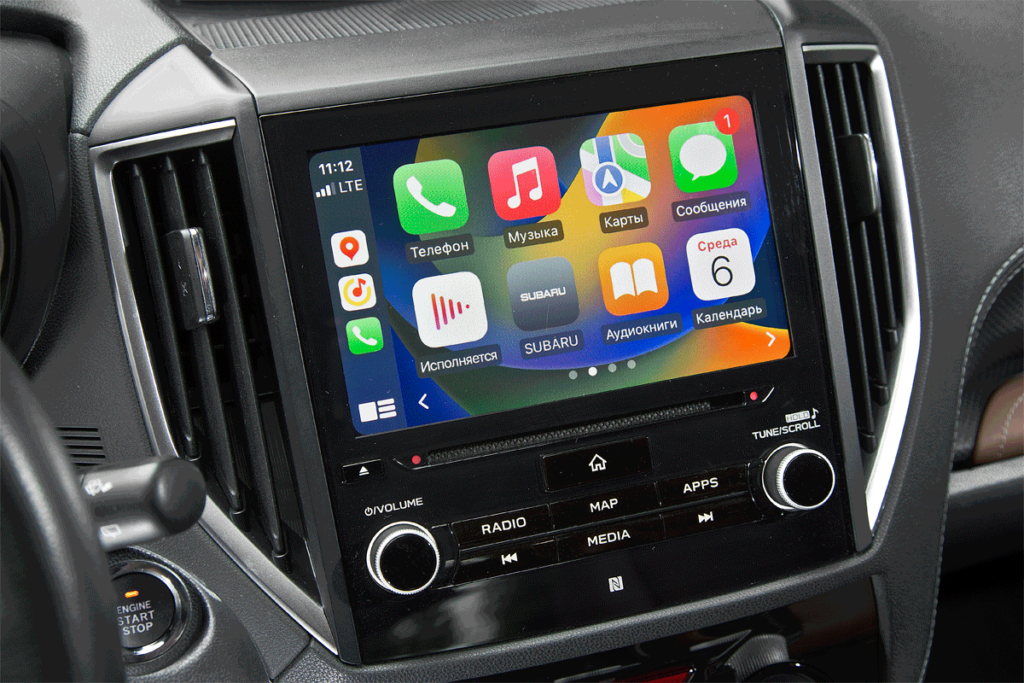
Subaru’s multimedia system allows you to easily connect your phone and use familiar apps from the central screen.
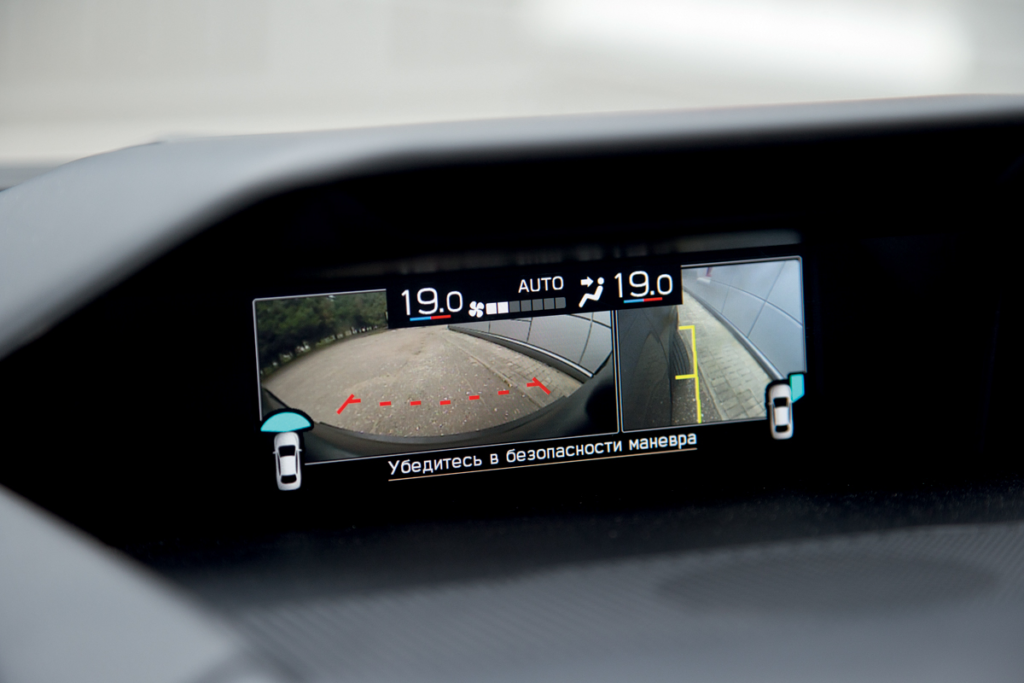
It’s unclear why a small upper screen was chosen for the rearview camera feed, not the main one.
Where the experiences align with the ratings is in the ride’s smoothness. The CR-V leans toward the firmer side. It rarely offers a truly calm ride – short waves, micro-profiles, and road irregularities are keenly felt. It doesn’t become uncomfortable, but considering its noticeable tendency to bounce on uneven roads and its somewhat unimpressive energy capacity, a smoother ride would be preferable.
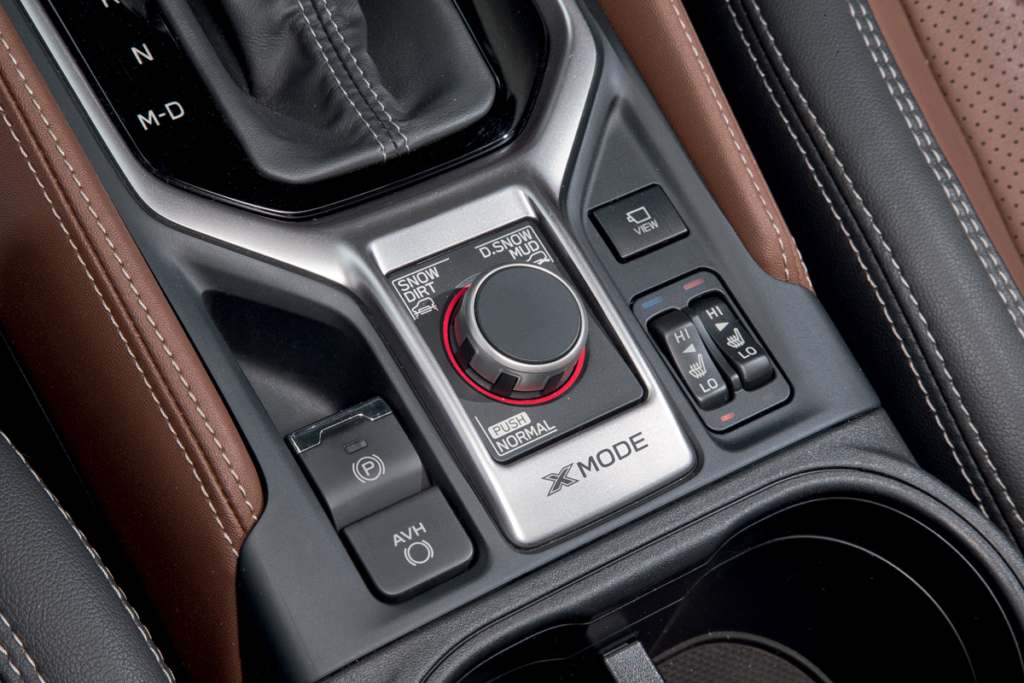
The off-road mode selector isn’t just for show: throttle and traction control settings change noticeably depending on the program. For active wheel spin, choose the Mud position.
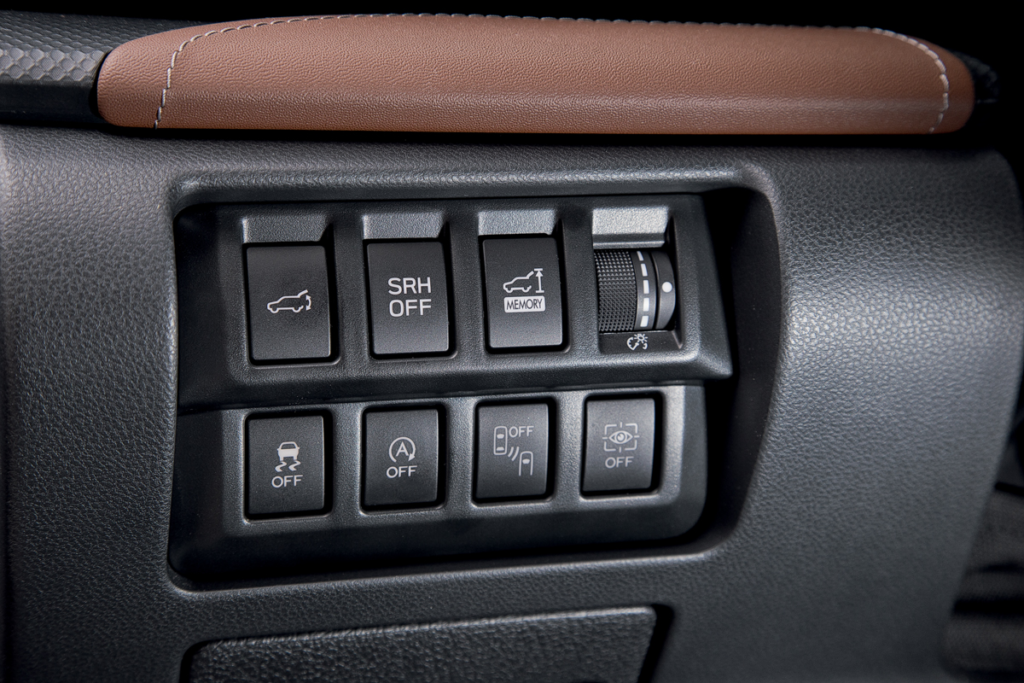
The assistant buttons are conveniently grouped into one block, and here’s also the instrument panel lighting control.
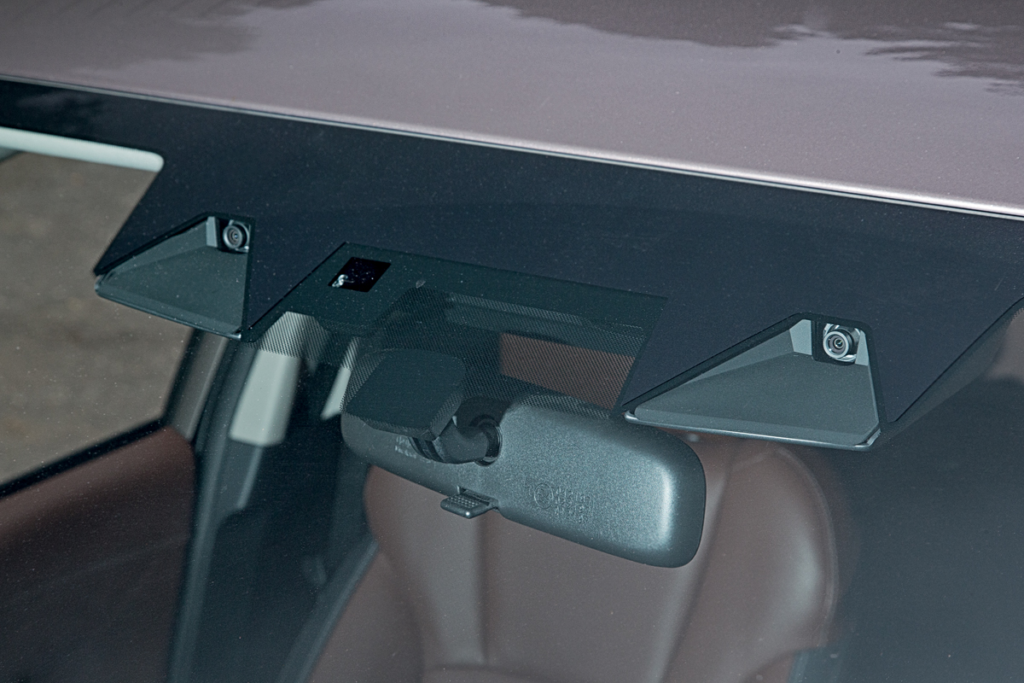
Subaru has its proprietary EyeSight system with a stereo camera, but this time, lane-keeping and active cruise control worked noticeably worse than on the Honda. While the CR-V effortlessly stayed in the middle of the road with markings, the Forester drifted from edge to edge.
Enter the Forester, offering a more comfortable experience. By today’s crossover standards, it boasts a suspension with an impressively long travel that remains composed even on rough terrain. The remarkable equilibrium between energy capacity and comfort earns it well-deserved accolades for ride smoothness. However, it loses out in terms of cabin noise insulation. The Honda isn’t a model of silence either, and not even the front double glazing can entirely remedy this. In urban settings, the CR-V, with its tire noise, starts to feel noisy at just 70 km/h (43 mph). Yet, when it comes to assessing highway driving, the Forester fares worse in the noise department. Here, the engine’s noise is more pronounced, the cabin tends to creak, and the overall noise level is slightly higher.
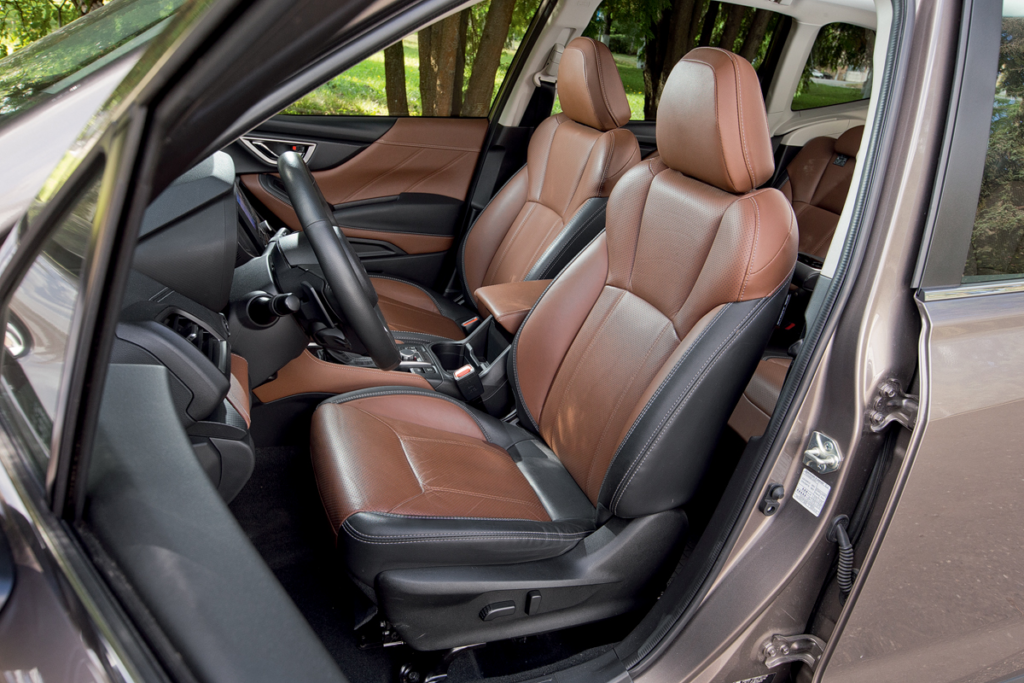
Subaru offers a lower seating position than Honda, and the seat cushion is somewhat short – taller drivers will notice this.
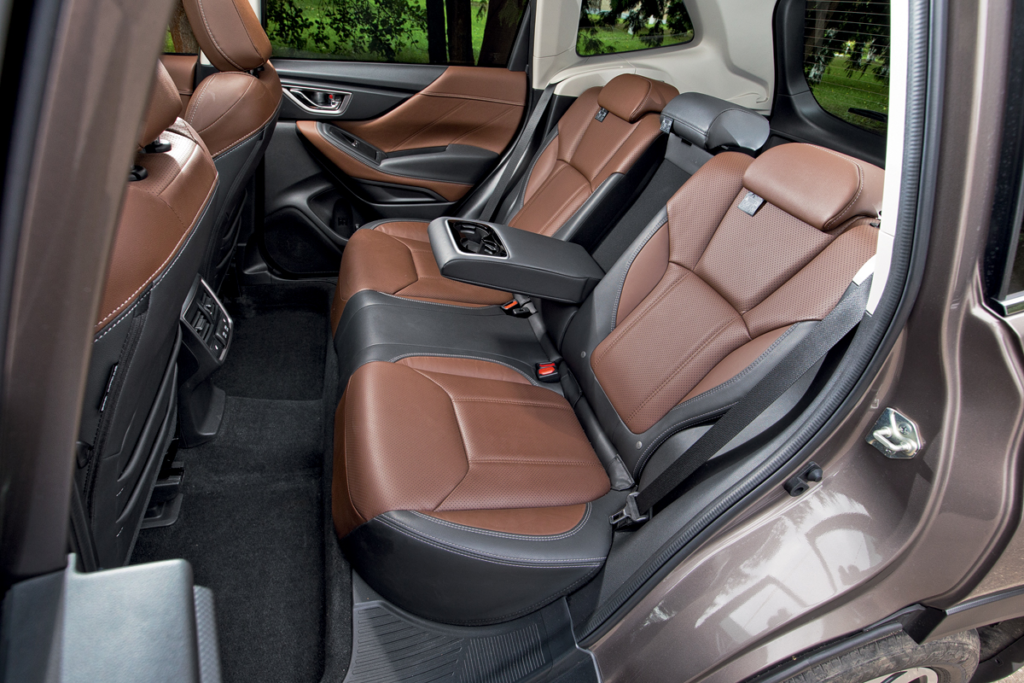
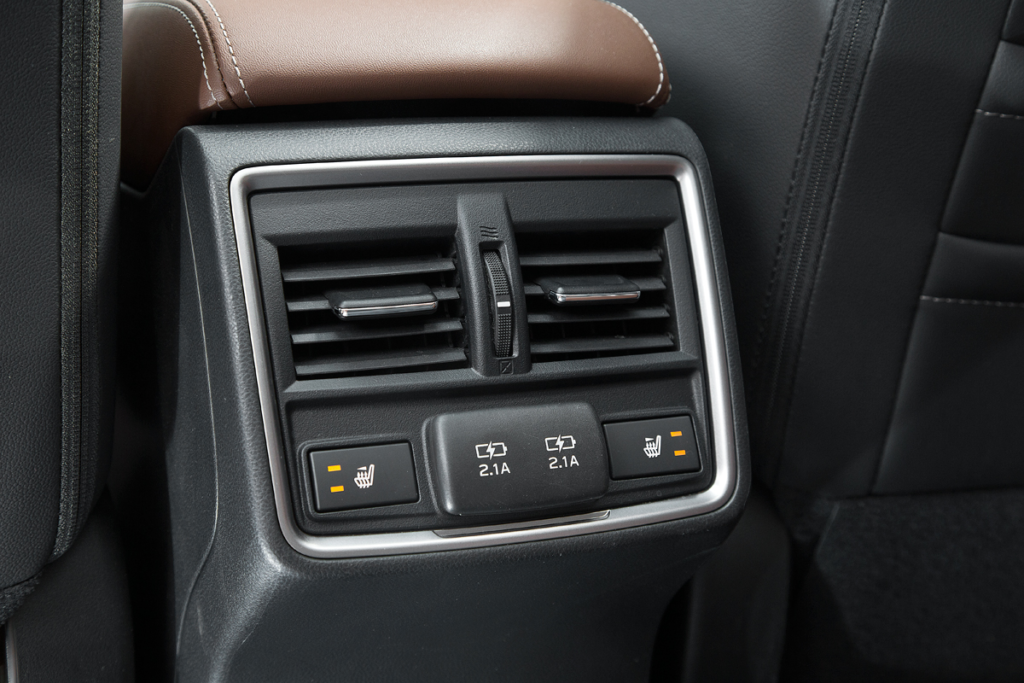
In the back, the Forester is as spacious as the CR-V, and the seat profile is more inviting, although there’s no adjustment.
Subaru clearly outperforms the competition in off-road capabilities. The victory of its chain-driven CVT over a belt-driven one plays a significant role here. Although it may seem like a minor design detail, its impact is substantial. The Forester stands out as a genuine off-roader, adept at traversing diagonal suspensions and scaling uphill gradients. You can crawl, clear dugout holes, halt, and then proceed with confident wheel spin. I grew bored of playing games on a 20-degree slope before I ever encountered signs of Subaru’s transmission overheating. On the other hand, the Honda left us with no game to play in these scenarios.
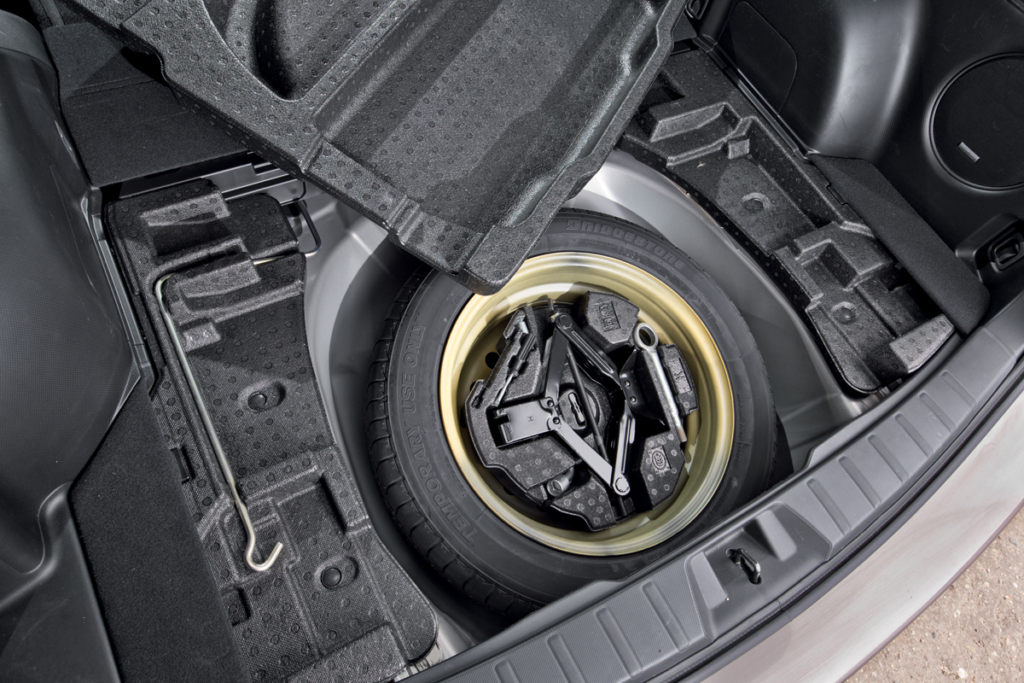
Under the convenient organizer, Subaru stores a spare wheel – proper care.
The CR-V, while capable of unloading the diagonally opposite wheels, twists its body more noticeably than the Subaru. Attempting to close the trunk lid even leads to an uncomfortable collision with the rear light components. More tellingly, it falls short in the ascent department. The CR-V manages to crawl to the first deep pit if you keep the throttle to the floor initially. However, should you stop, your only way forward is downhill. With the gas pedal floored, the revs barely exceed two thousand, showcasing classic belt-driven impotence. What’s more, after tormenting the transmission in this manner for half a minute, it clearly went into protective mode, making reversing through a small ditch a challenge. Yet, until that moment, the CR-V hadn’t even noticed the obstacle. Unfortunately, the off-road capability of the Honda remains quite conditional, with its all-wheel drive primarily aiding on snow-covered asphalt roads. The slender rear drive shafts confirm this.
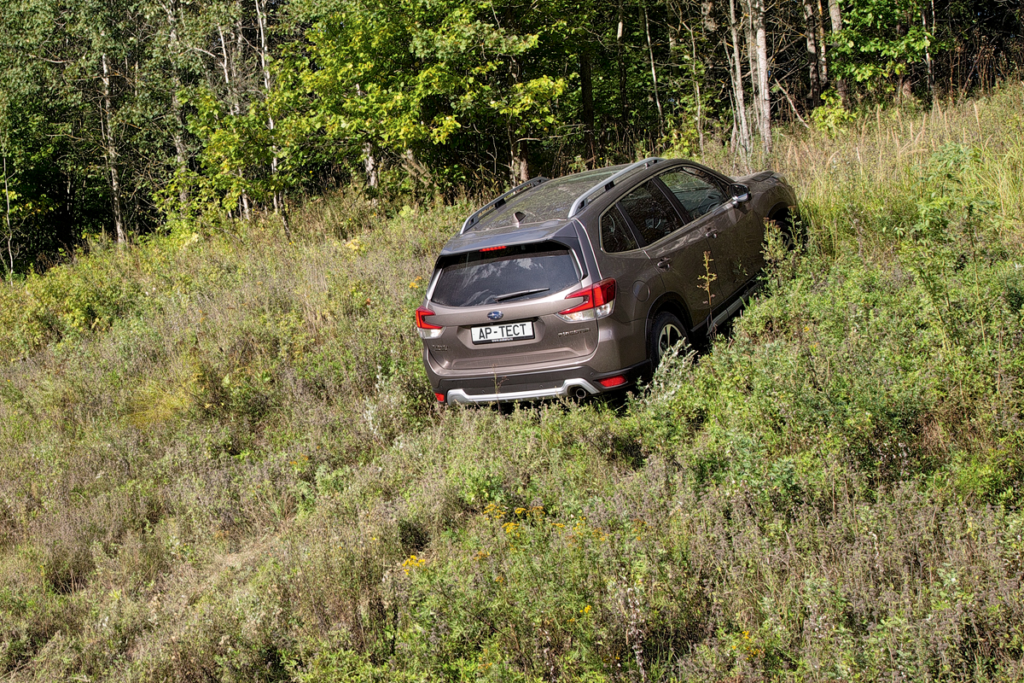
The Forester is the king of the hill not only in this duet; few in the class can move off the asphalt as confidently.
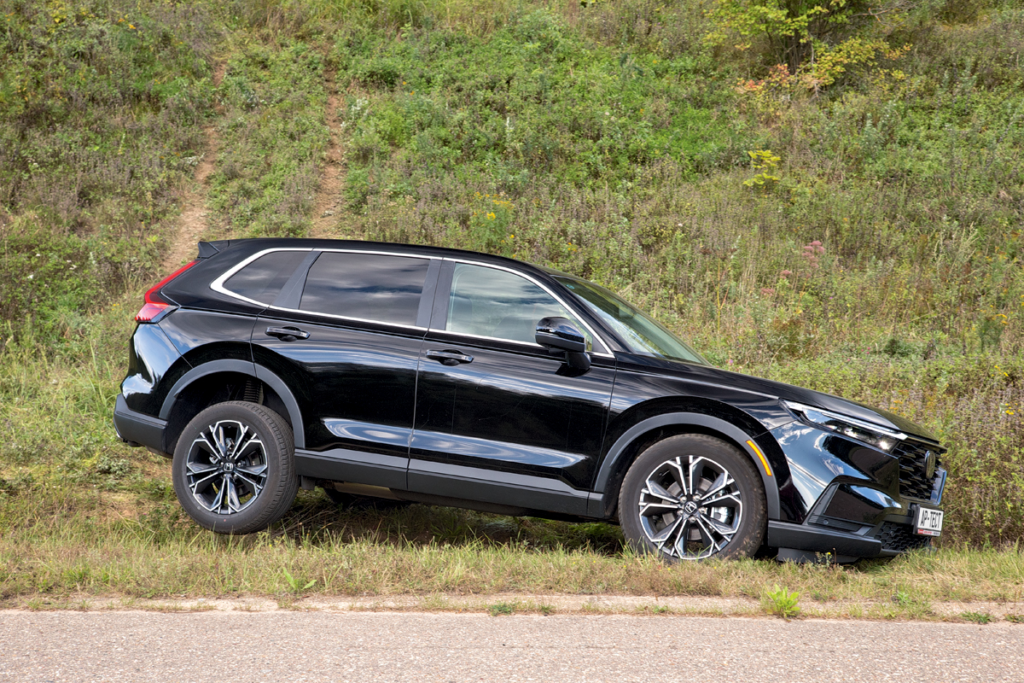
The Honda manages diagonal wheel articulation, but its body noticeably twists.
In our pairing, the Forester emerges as the more versatile car, reflected in its comprehensive expert score. However, the Honda lags only slightly behind and is no less appealing than the Subaru in my personal opinion. Even though these cars now come with a price tag twice that of their predecessors and dealer quotations range from five to six million rubles, which don’t quite align with the cabin materials, they remain simple and unpretentious crossovers. These vehicles exemplify what a car developed by a company with a rich history and solid engineering expertise can offer. These are, above all, genuine cars. Unfortunately, the same cannot be said for most mass-produced Chinese models flooding the market. The Honda CR-V and Subaru Forester embody real machines of their time, evoking a sensible conservatism in their interiors and designs, seemingly frozen in the late 2000s. Do you remember the sense of well-being you enjoyed back then?
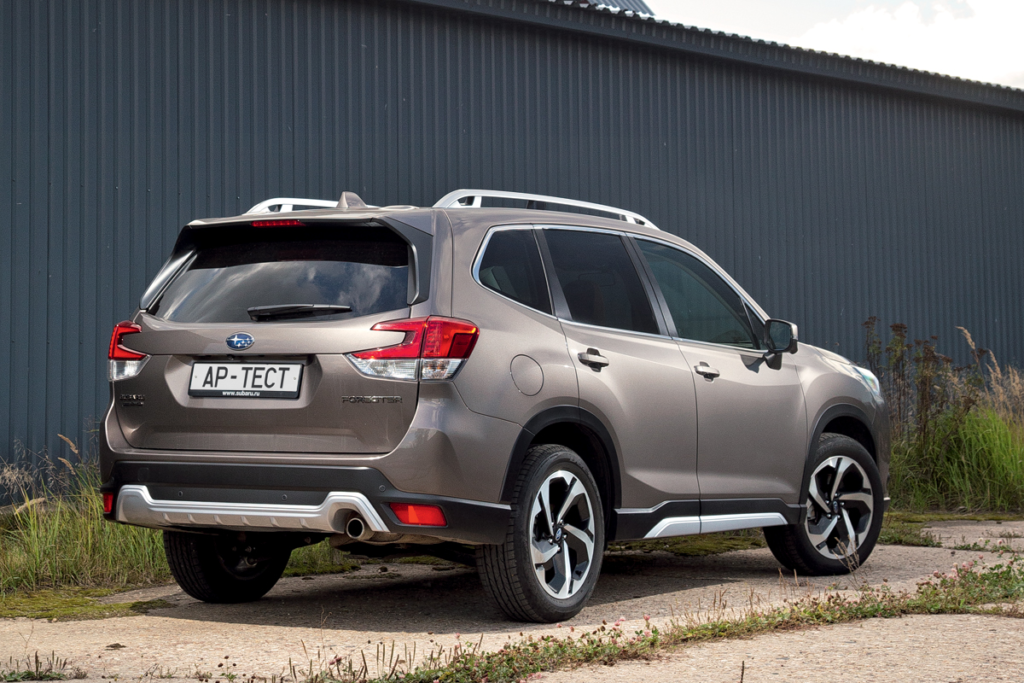
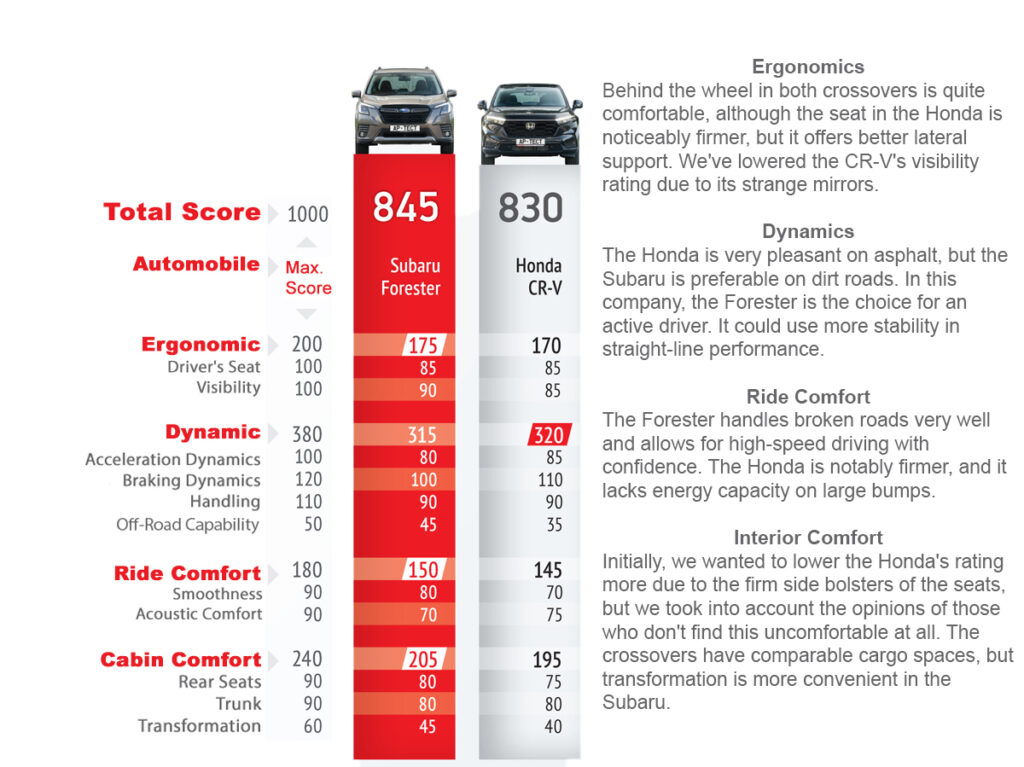
Emergency Situations:
In the slalom test, the spirited Forester, surprisingly, exhibited a disciplined character. The credit goes to its strict and efficient stability control system. At the slightest hint of a skid during a change of direction, the system swiftly intervened, applying the brakes to the outer front wheel, thus inducing understeer. While this led to a notable decrease in speed, the range of maneuvering options also diminished. However, this setup serves the safety and needs of most drivers well, with a final speed of 82.6 km/h (51.3 mph), which is more than respectable.
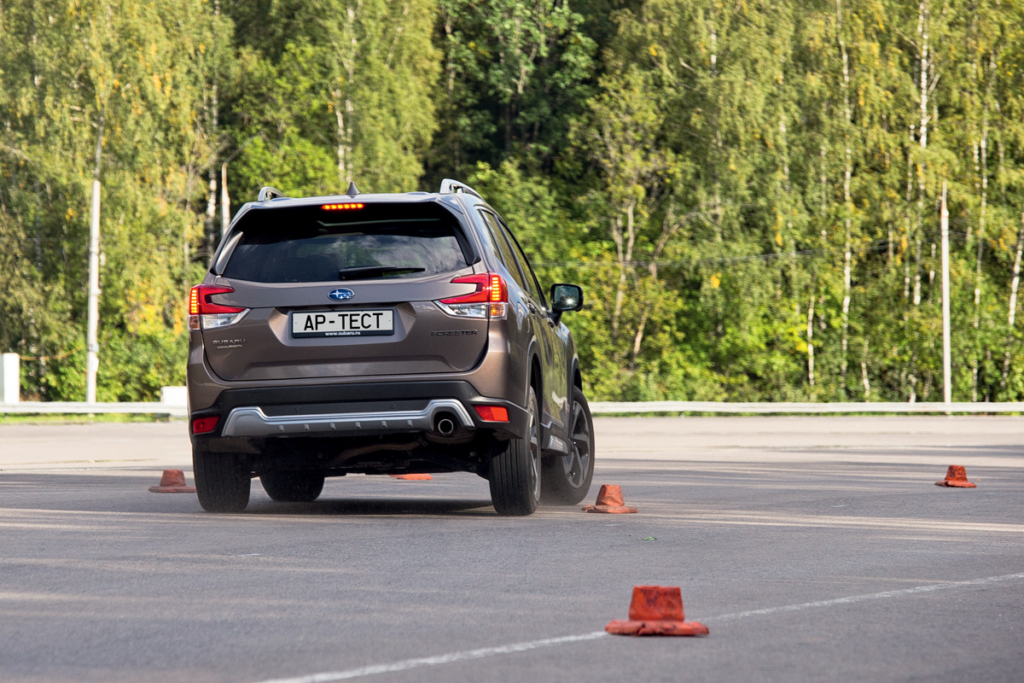
Subaru Forester
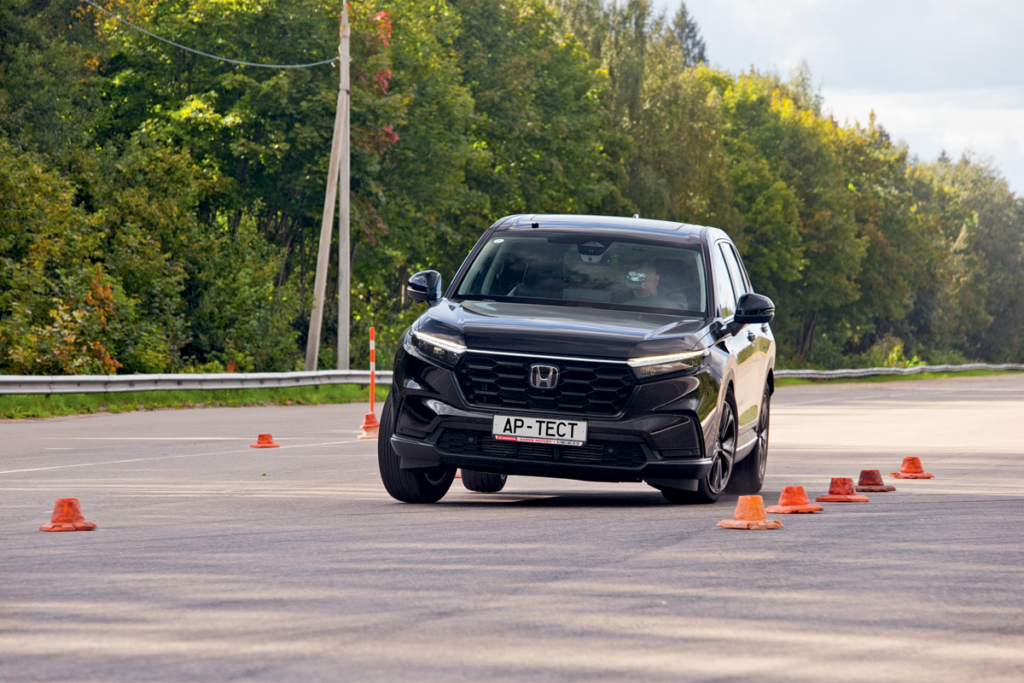
Honda CR-V
During the same exercise, the Honda’s behavior was somewhat similar, though the sliding of the front wheels extended longer, and the decrease in speed was less pronounced. As a result, it reached a speed of 81.3 km/h (50.5 mph). However, the CR-V showcased its prowess in an avoidance maneuver. It followed the desired path with precision, decelerated effectively, and posed no challenges for the driver. The final result was a stopping distance of 33 meters with minimal variation between attempts. In these conditions, the Forester displayed less stability. Braking during the lane change led to an increased stopping distance of 35 meters, with a two-meter difference between the results.
Cargo Space:
Both vehicles offer spacious cargo areas with wide openings. The Subaru excels in terms of transformation, boasting a perfectly flat floor and buttons to lower the rear seats from the trunk. Nevertheless, a word of caution is in order: the seats feature powerful springs, causing the backrest to snap down abruptly.
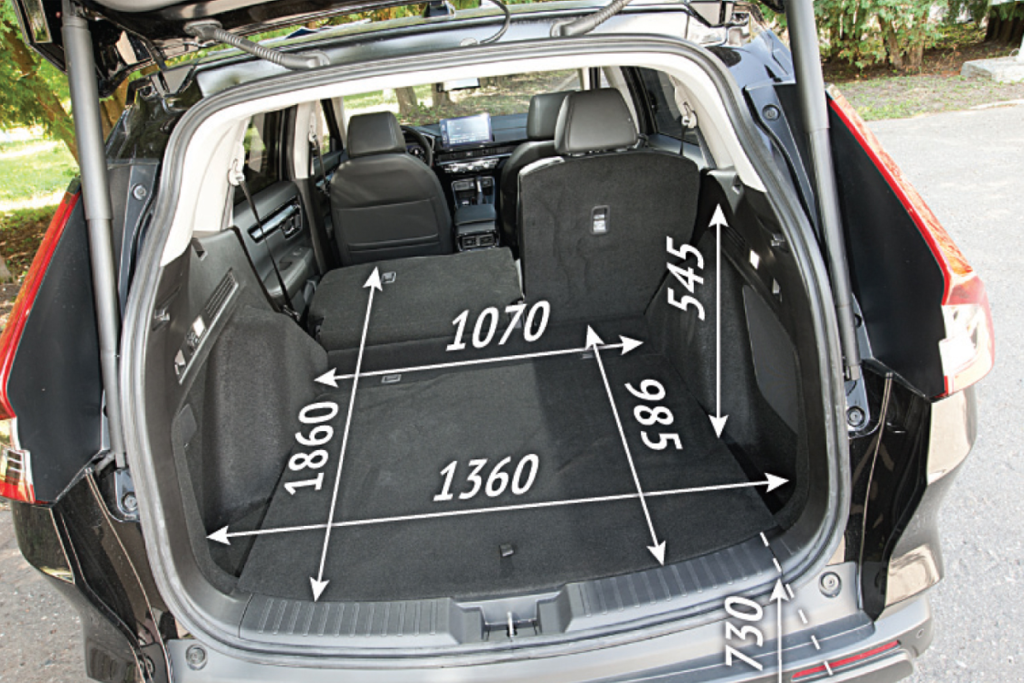
Honda CR-V
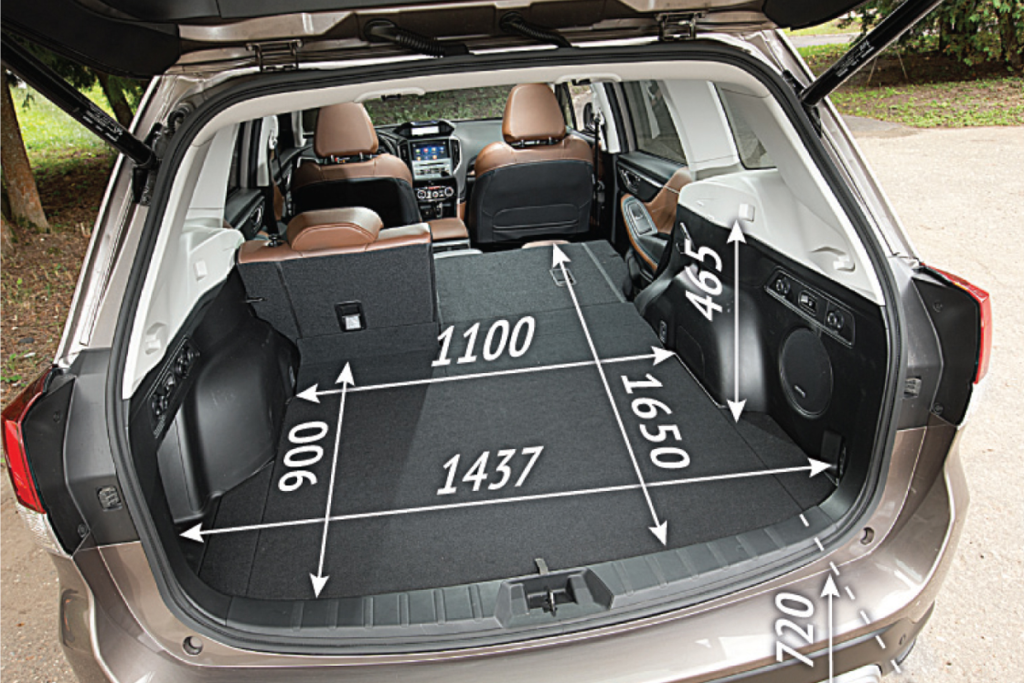
Subaru Forester
Dimensions, weight and weight distribution along the axes
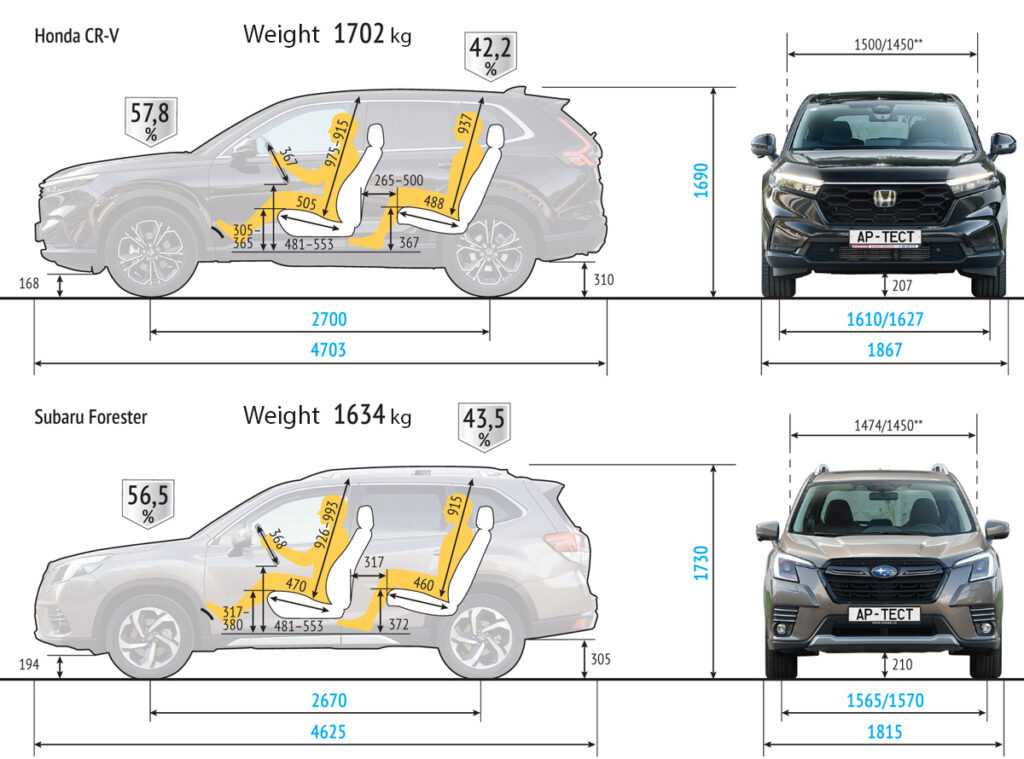
Manufacturers’ data are highlighted in blue/Autoreview measurements are highlighted in black. Dimensions are in millimeters.
*Actual vehicle weight without driver, with full fuel tank and full process fluids
**Interior width at shoulder level in the first/second row of seats.
| Parameter | Honda CR-V | Subaru Forester |
|---|---|---|
| Dimensions (mm) Length Width Height Wheelbase Front/Rear Track Widths | 4703 1867 1690 2700 1610/1627 | 4625 1815 1730 2670 1565/1570 |
| Cargo Capacity (Standard EPA), L | 1113—2166* | 762—1957* |
| Curb Weight, kg | 1685 | 1676 |
| Gross Vehicle Weight, kg | 2147 | 2223 |
| Engine | Gasoline, direct injection, turbocharged | Gasoline, direct injection |
| Engine Location | Front, Transverse | Front, Longitudinal |
| Number and Arrangement of Cylinders | 4, Inline | 4, Opposed |
| Displacement, cc | 1498 | 2498 |
| Max Power, hp/kW/rpm | 190/140/5600 | 185/136/5800 |
| Max Torque, Nm/rpm | 243/2000—5000 | 239/4400 |
| Transmission | Belt-Driven CVT | Chain-Driven CVT |
| Drive | All-Wheel Drive | All-Wheel Drive |
| Front Suspension | Independent, Spring, McPherson | Independent, Spring, McPherson |
| Rear Suspension | Independent, Spring, Multi-Link | Independent, Spring, Double Wishbone |
| Maximum Speed, km/h | 188 | 207 |
| Acceleration 0–100 km/h, s | N/A** | 9.5 |
| Fuel Consumption, l/100 km Mixed Cycle | 8.4 | 7,4 |
| Fuel Tank Capacity, L | 53 | 63 |
| Fuel | Petrol (AI-92—95) | Petrol (AI-95) |
*With the rear seats folded
**N.d. – No data
Photo: Dmitry Pitersky
This is a translation. You can read an original article here: Классика жанра: Honda CR-V нового поколения и Subaru Forester на полигоне

Published January 10, 2024 • 16m to read

